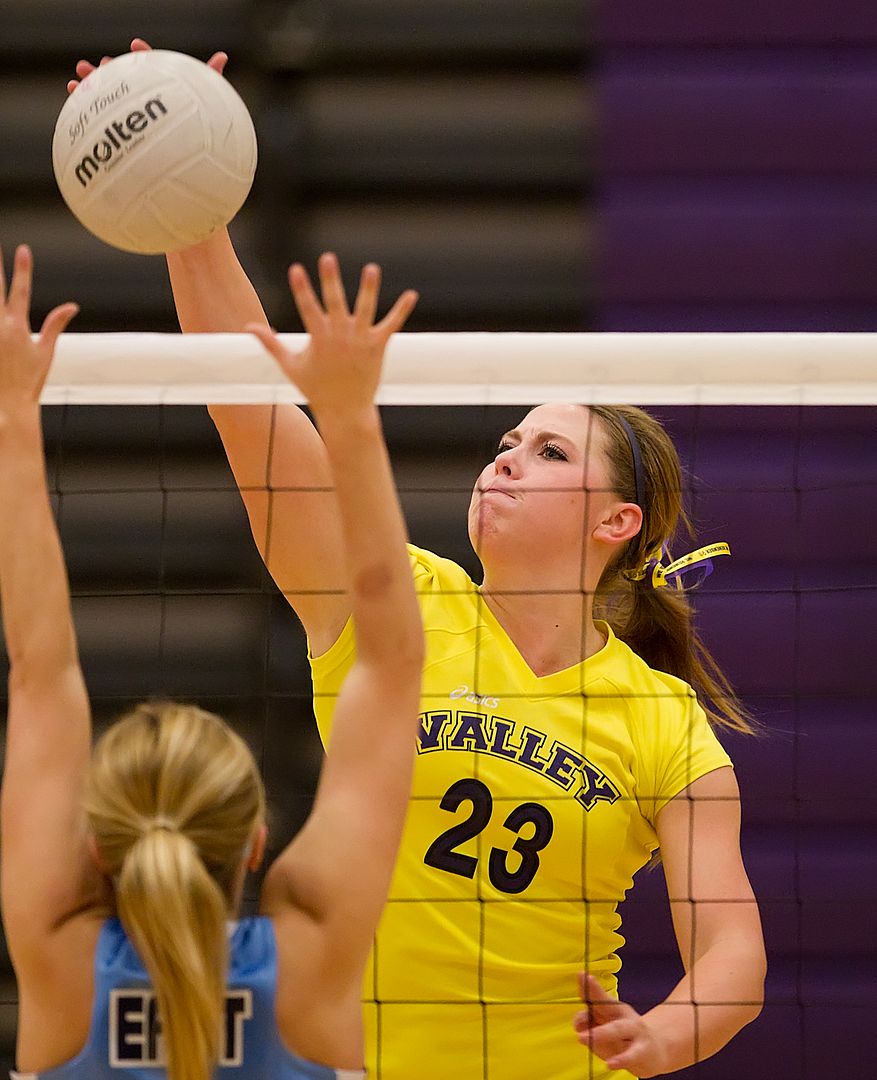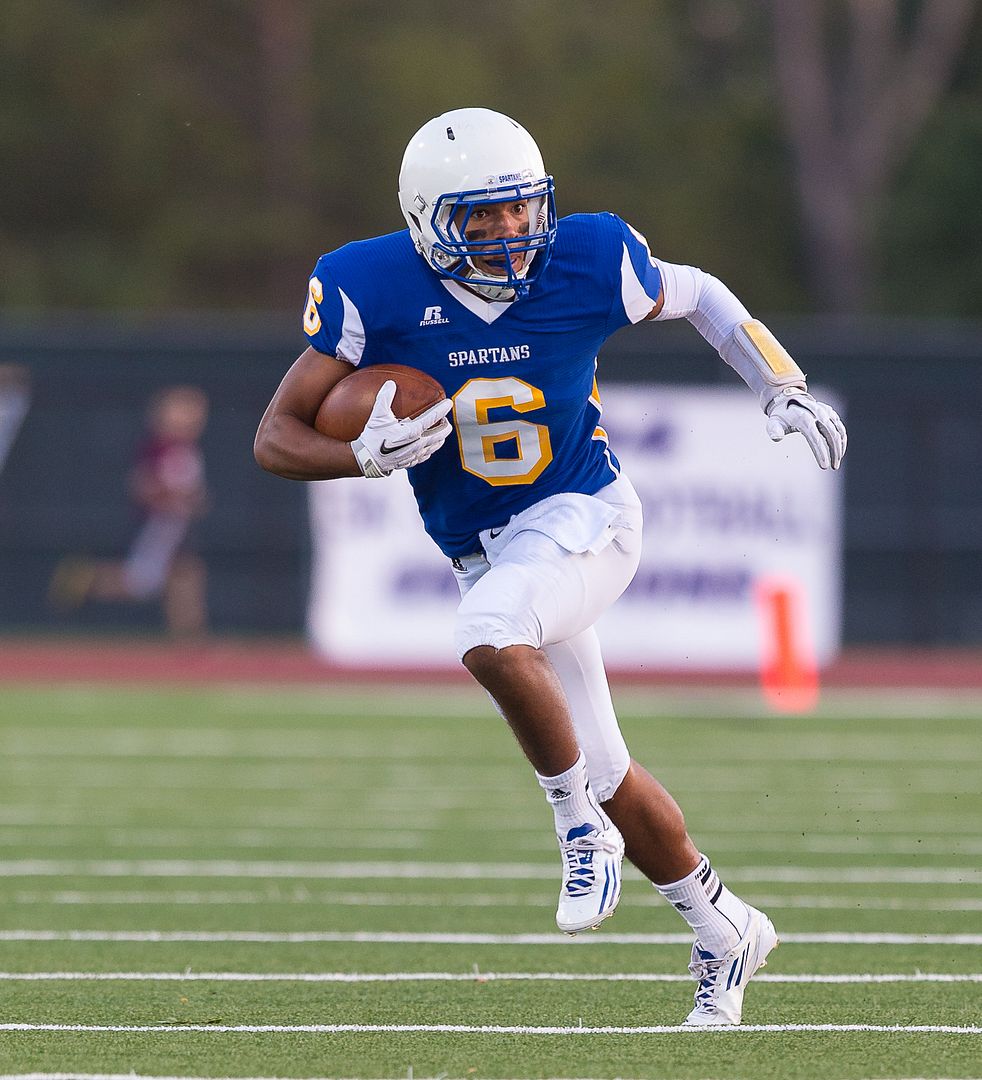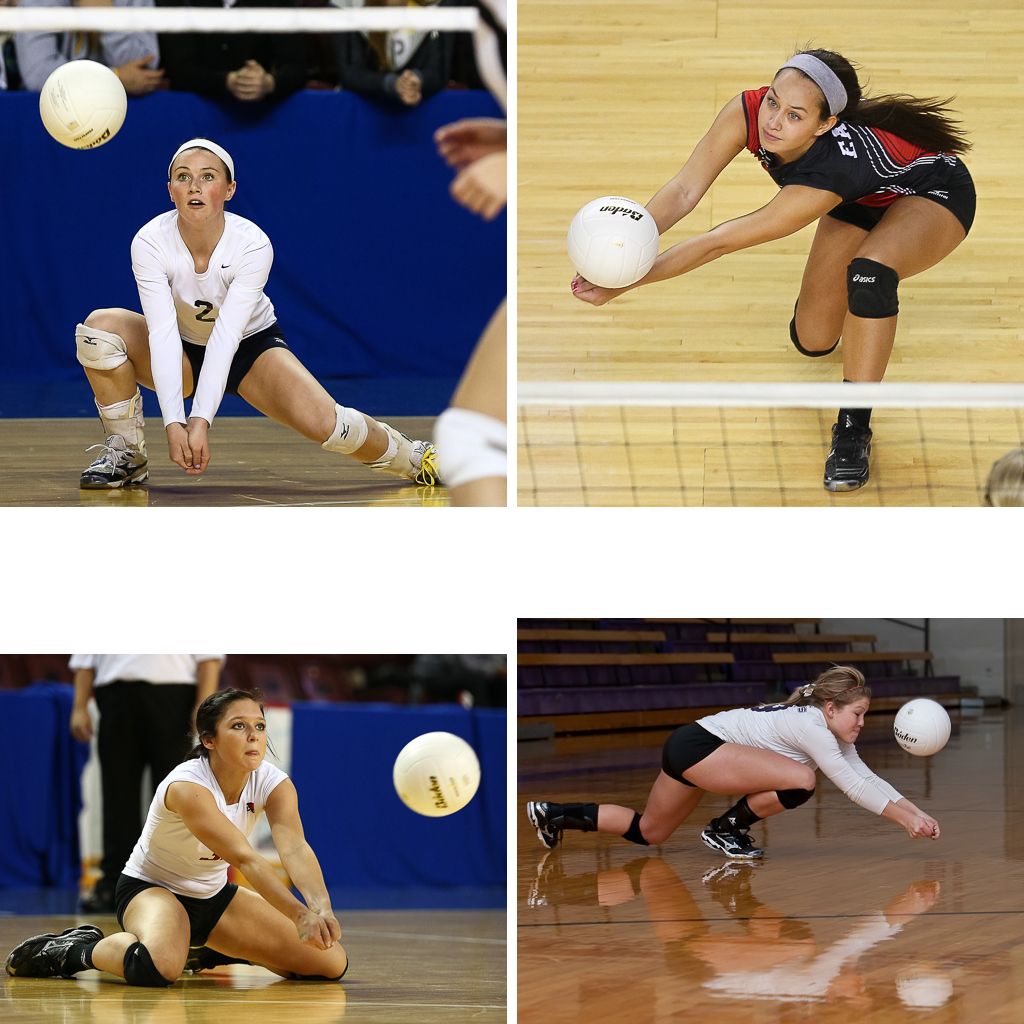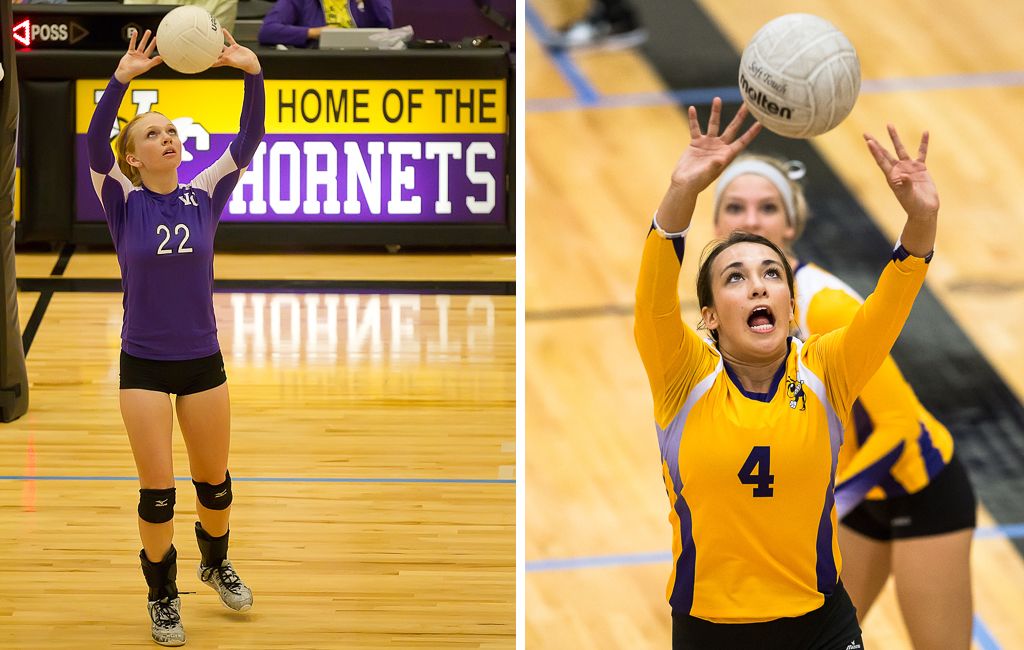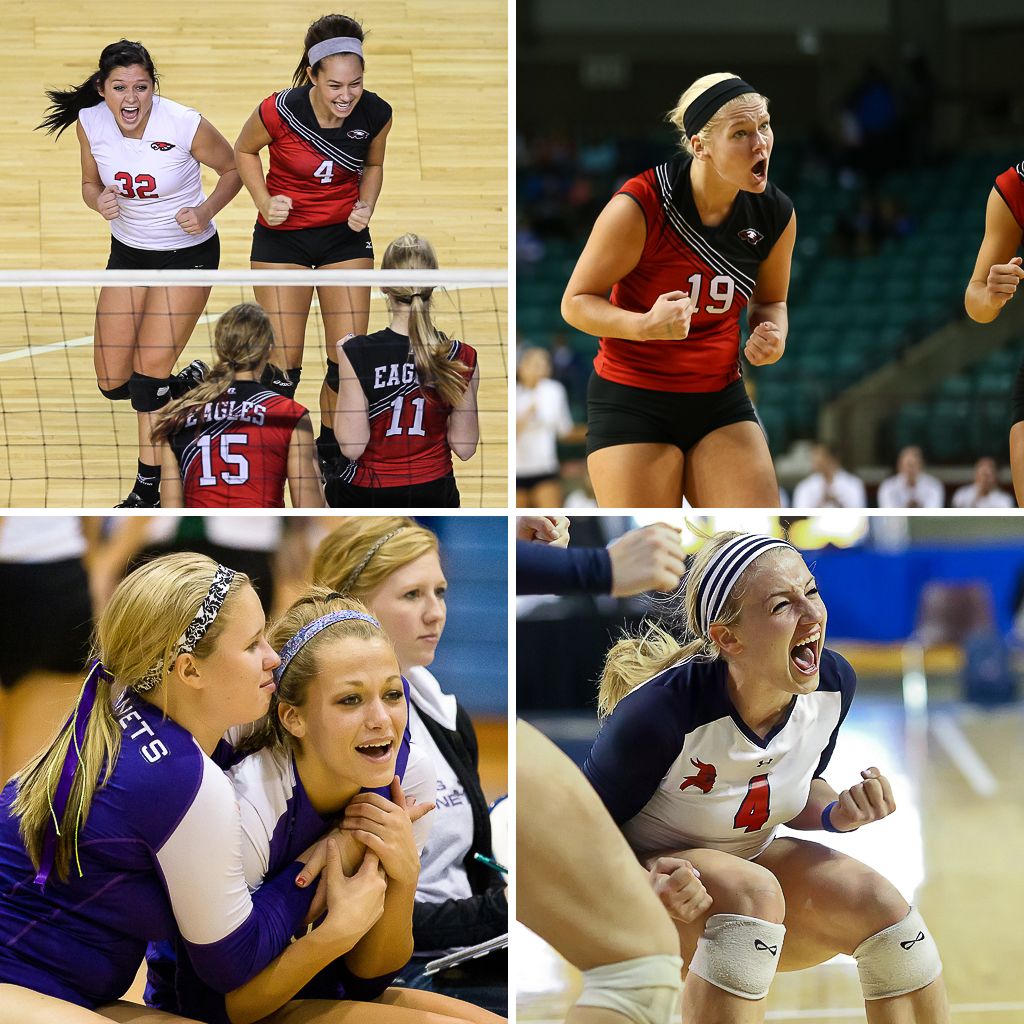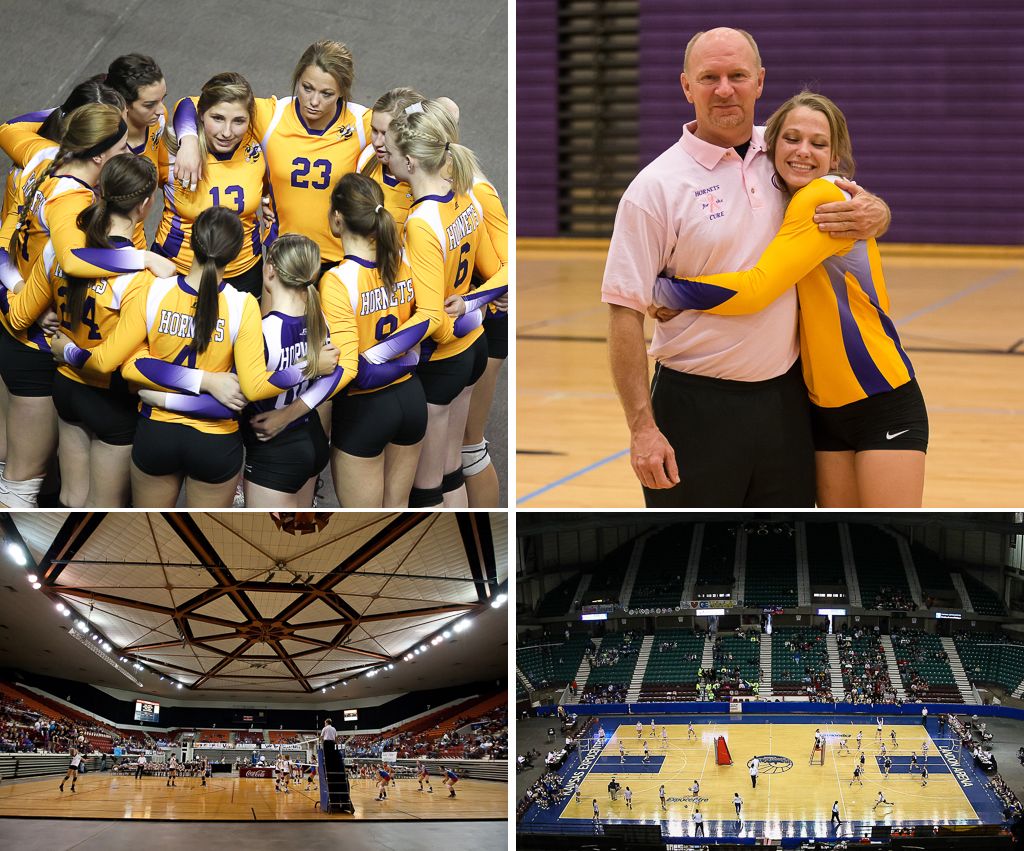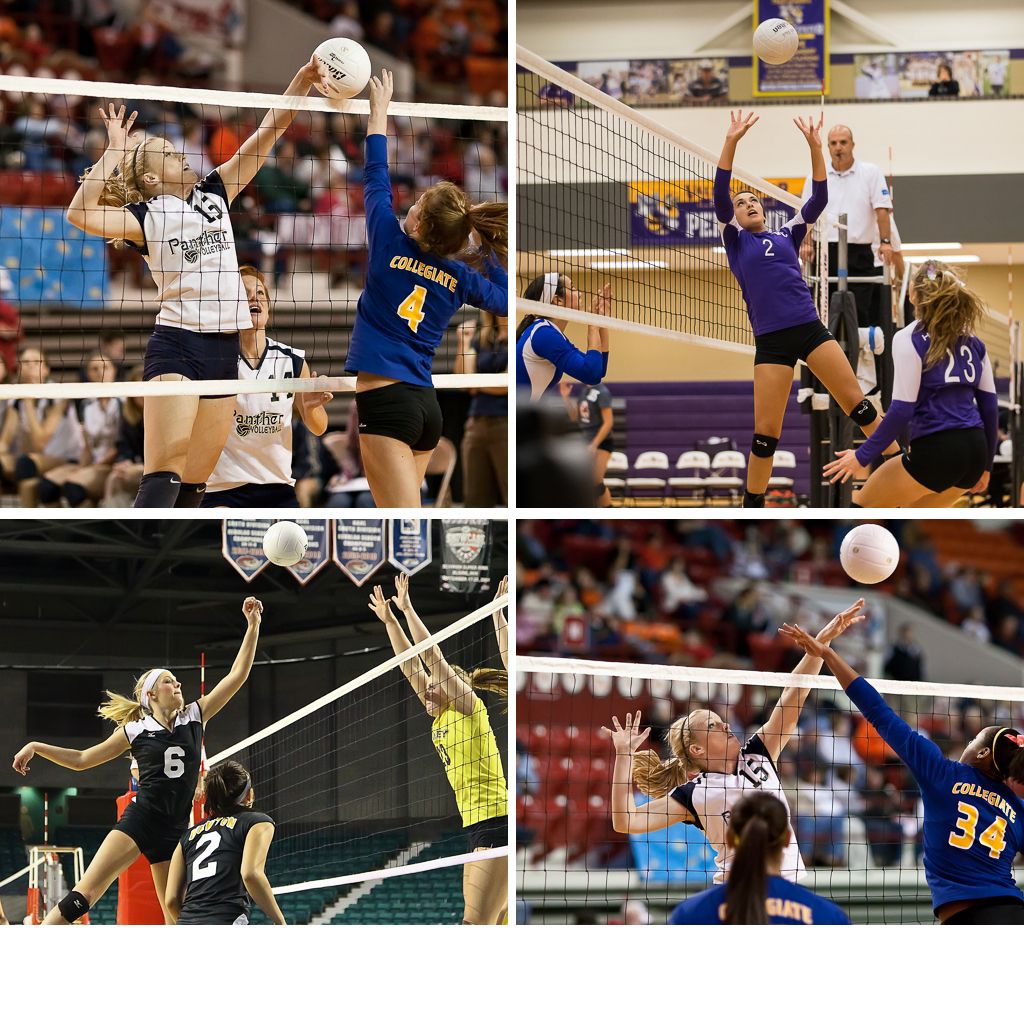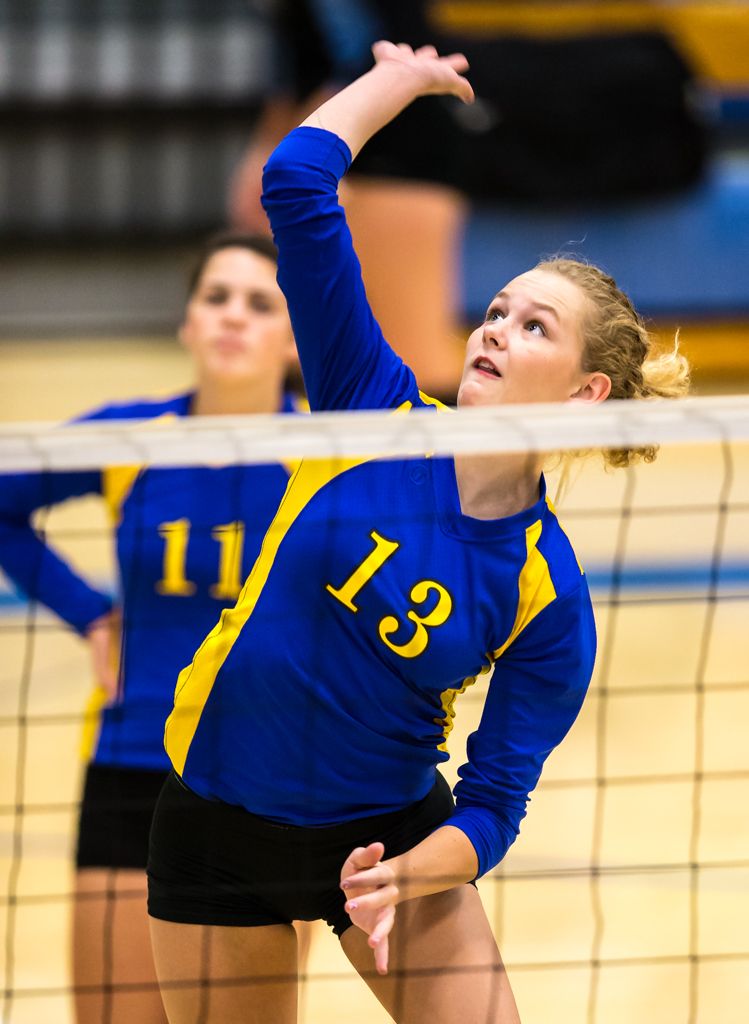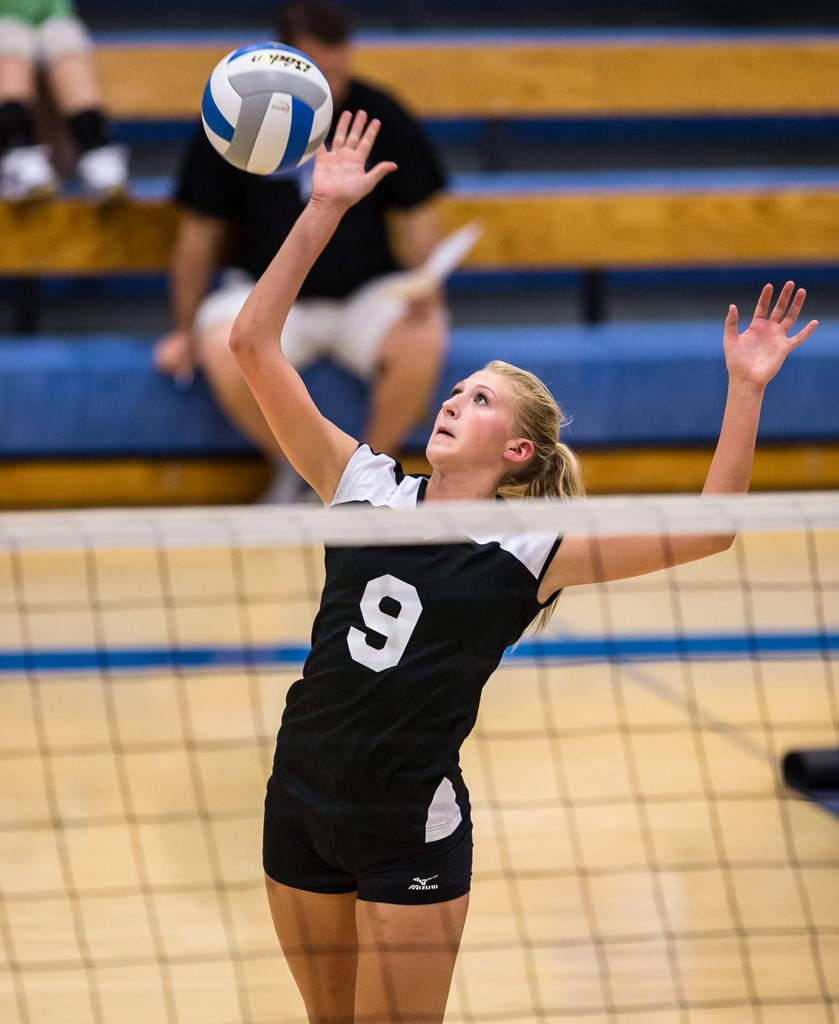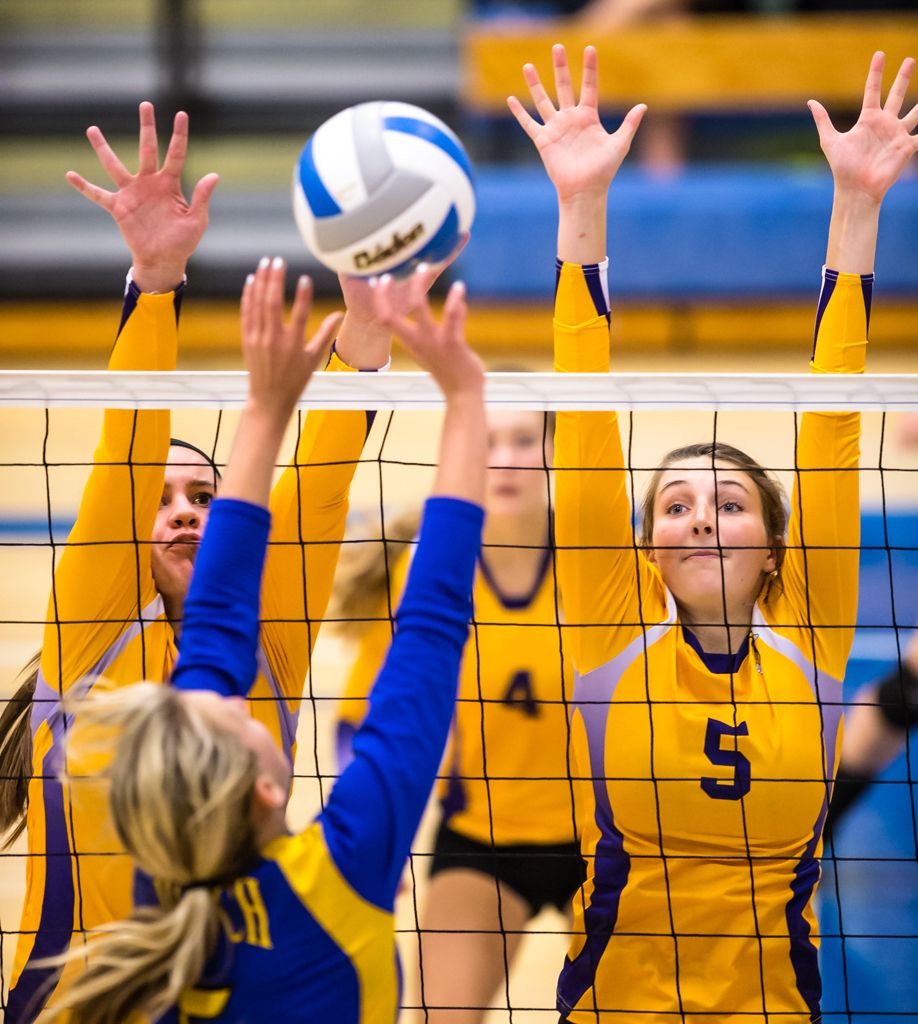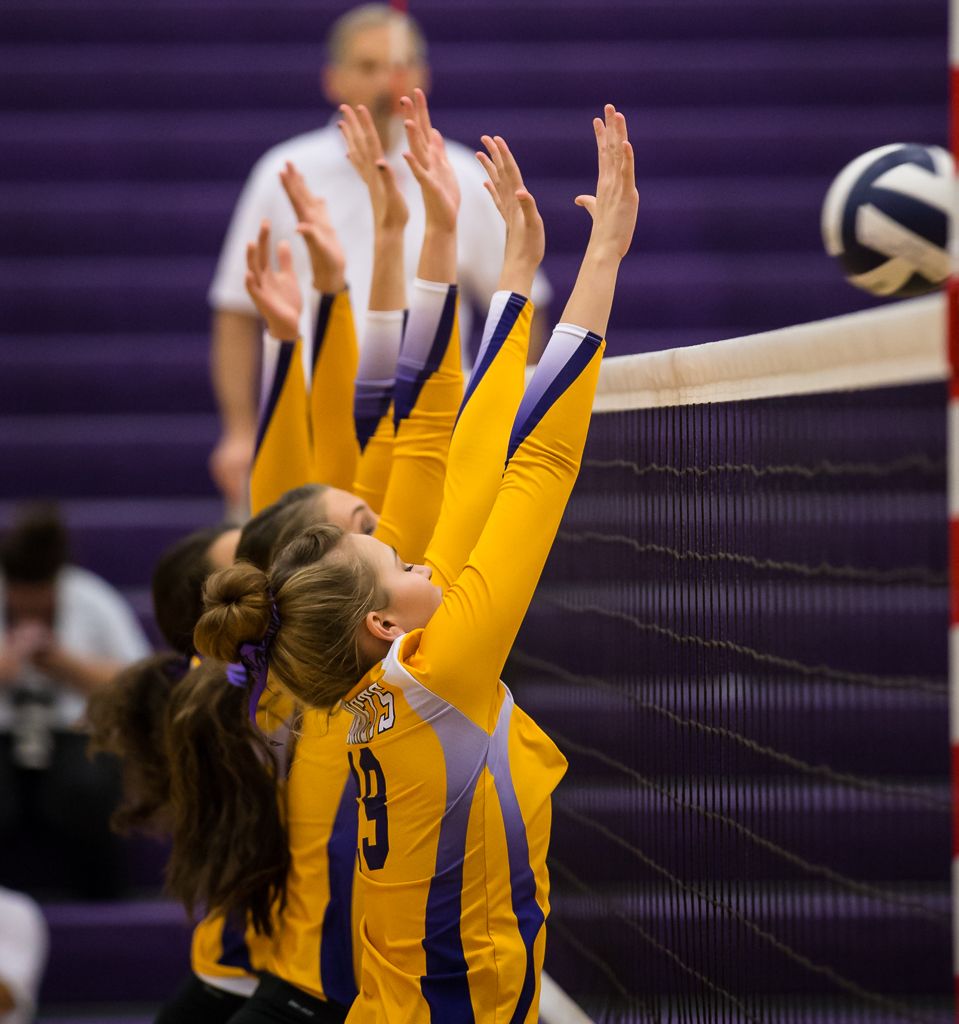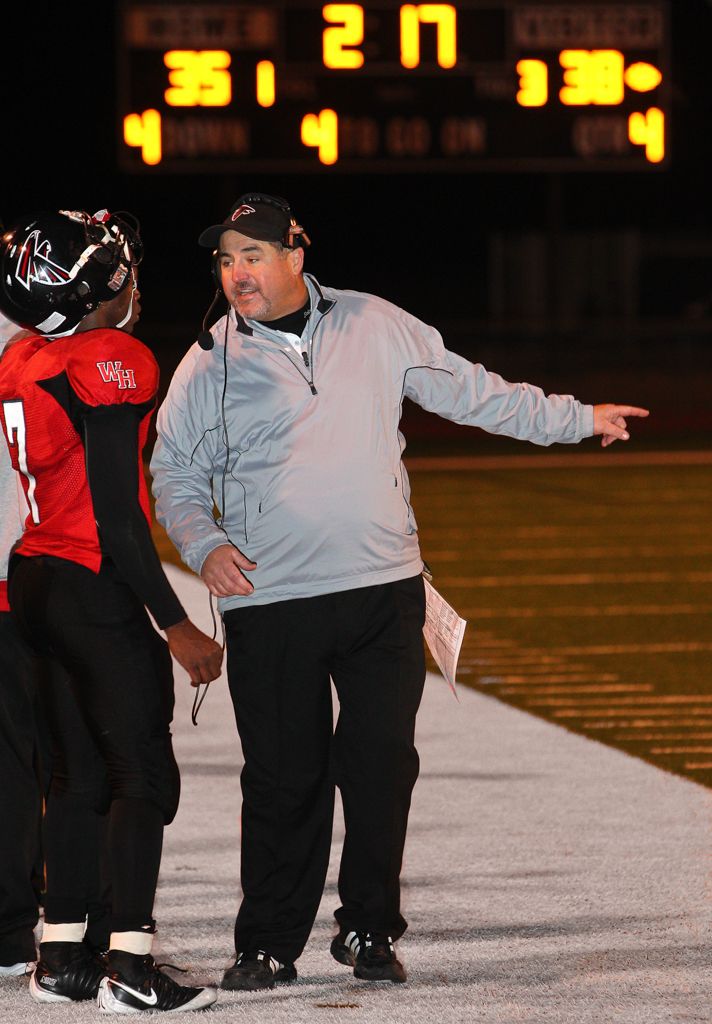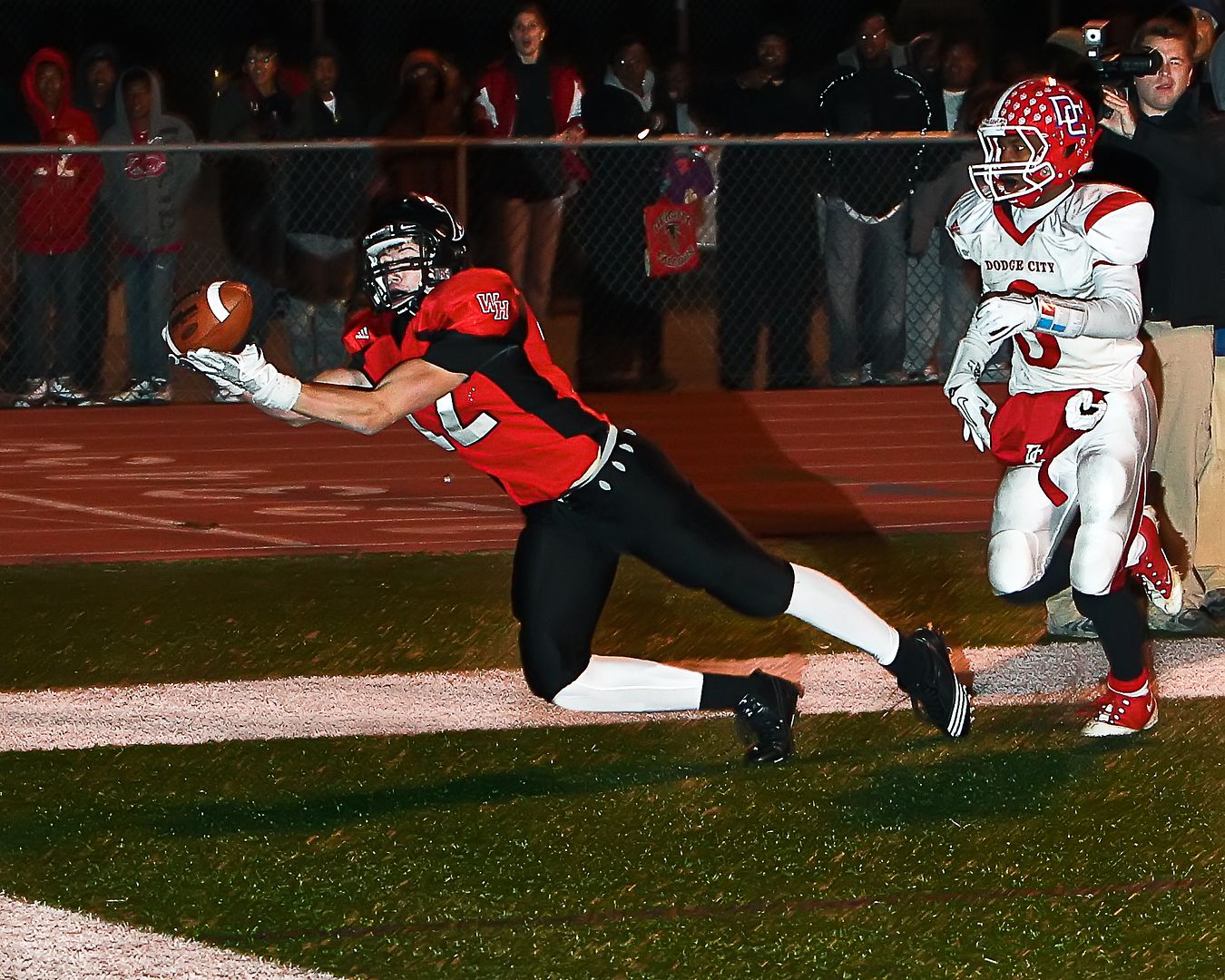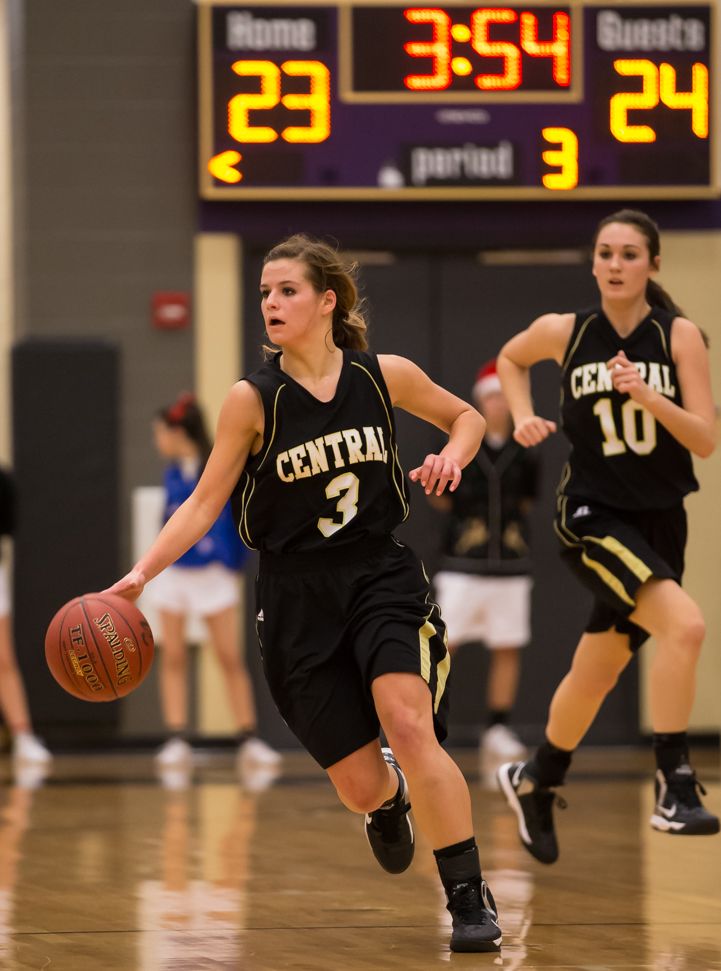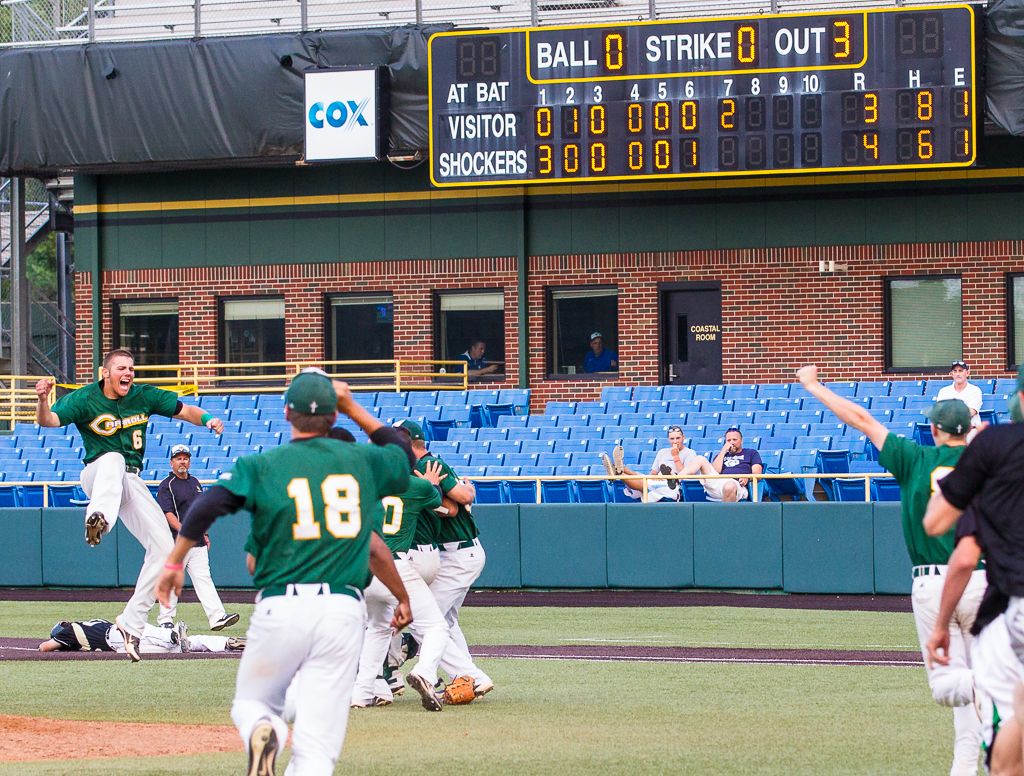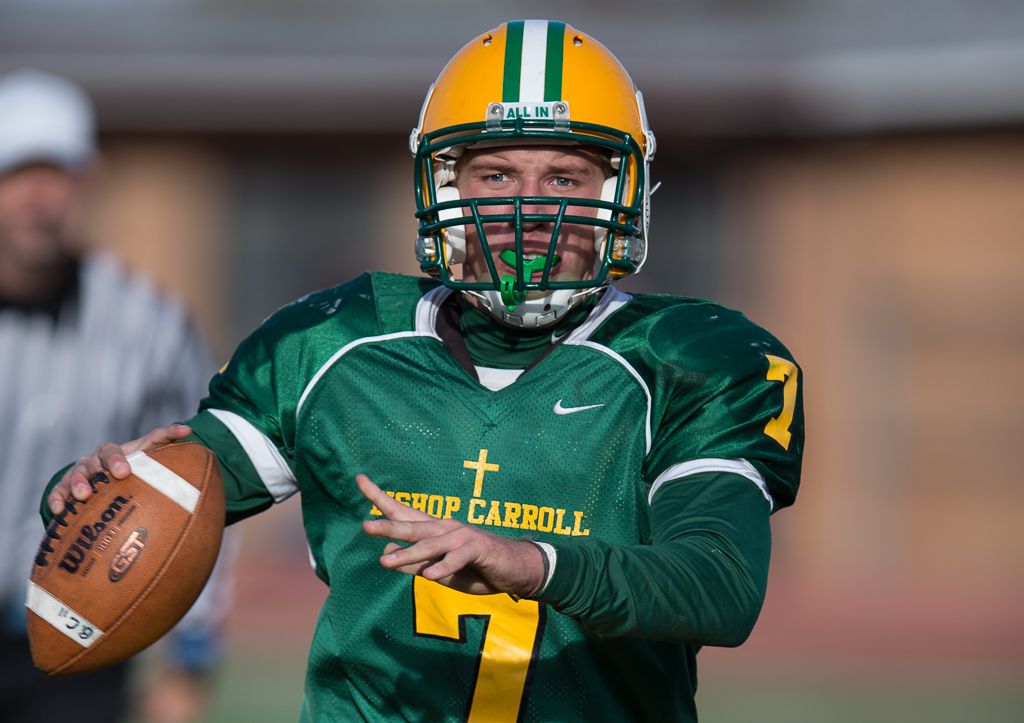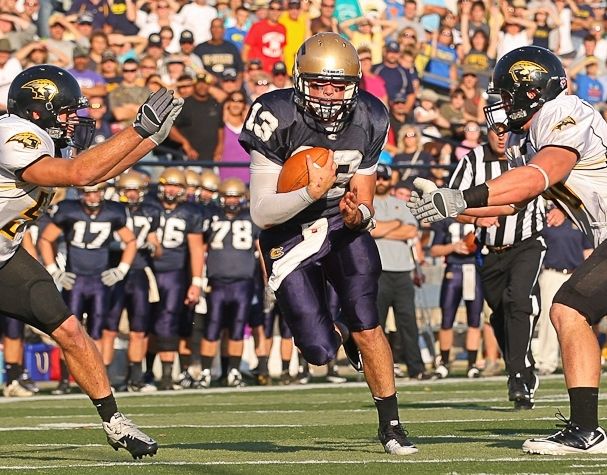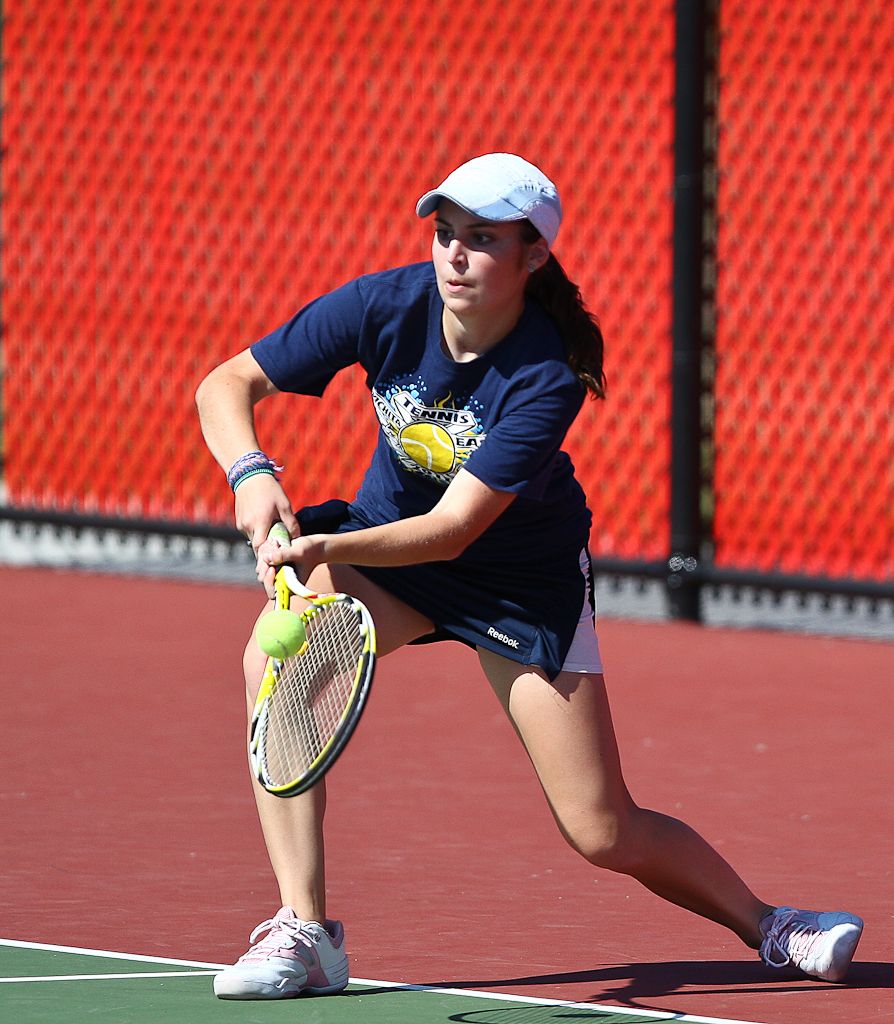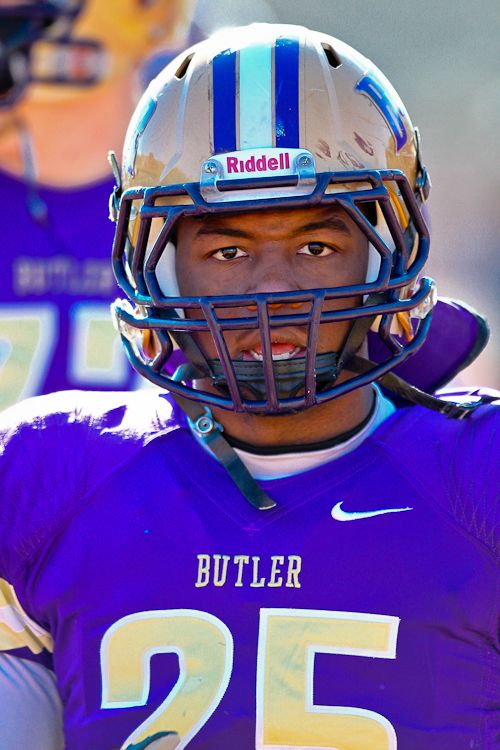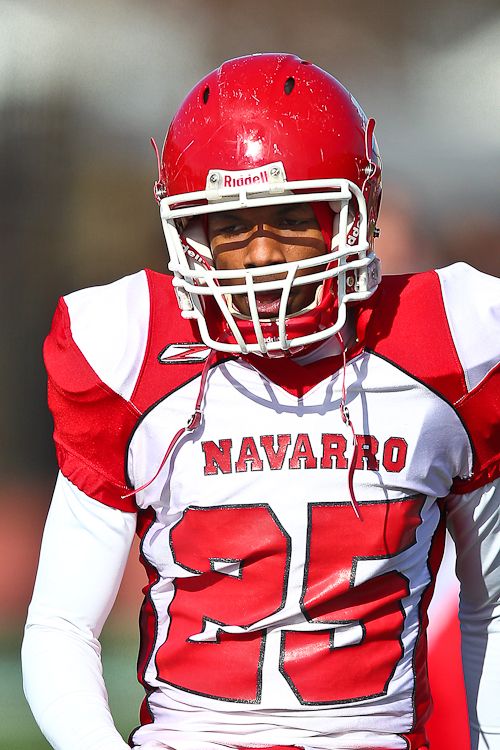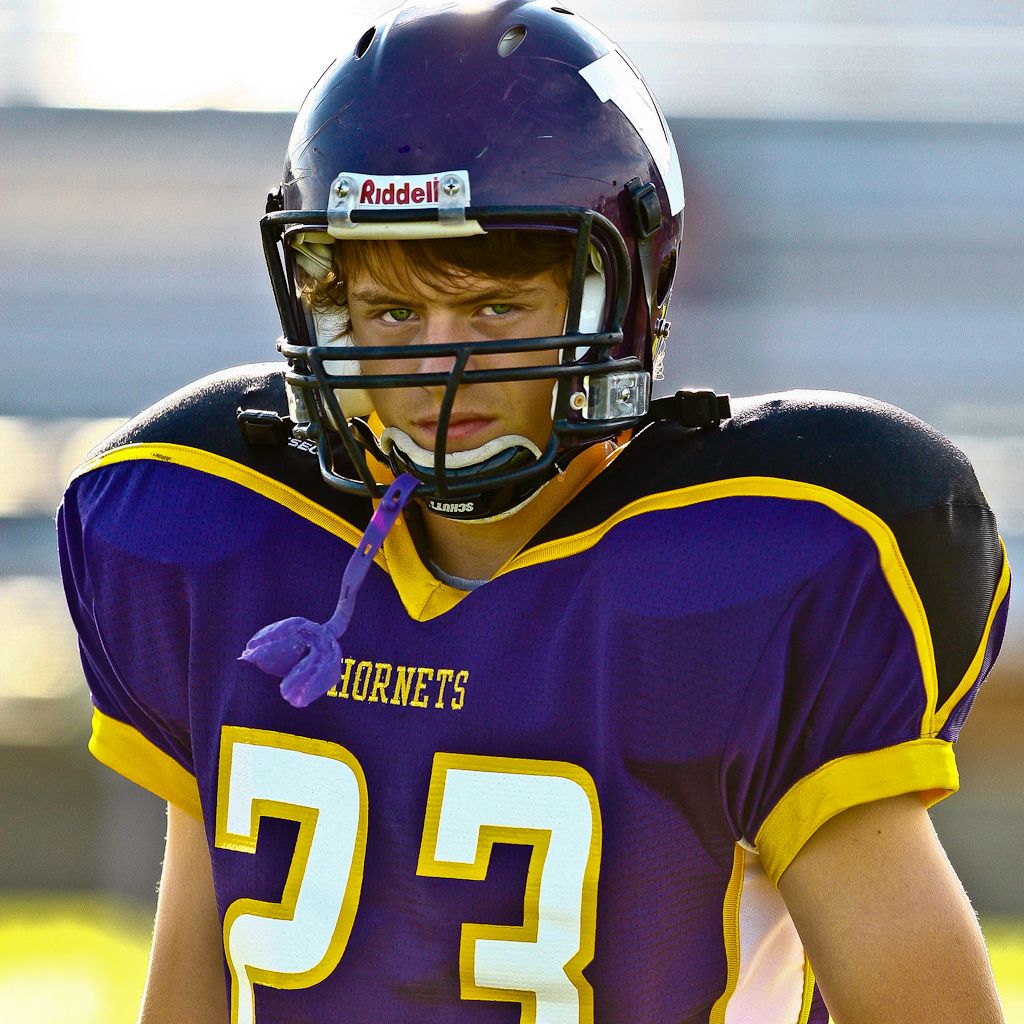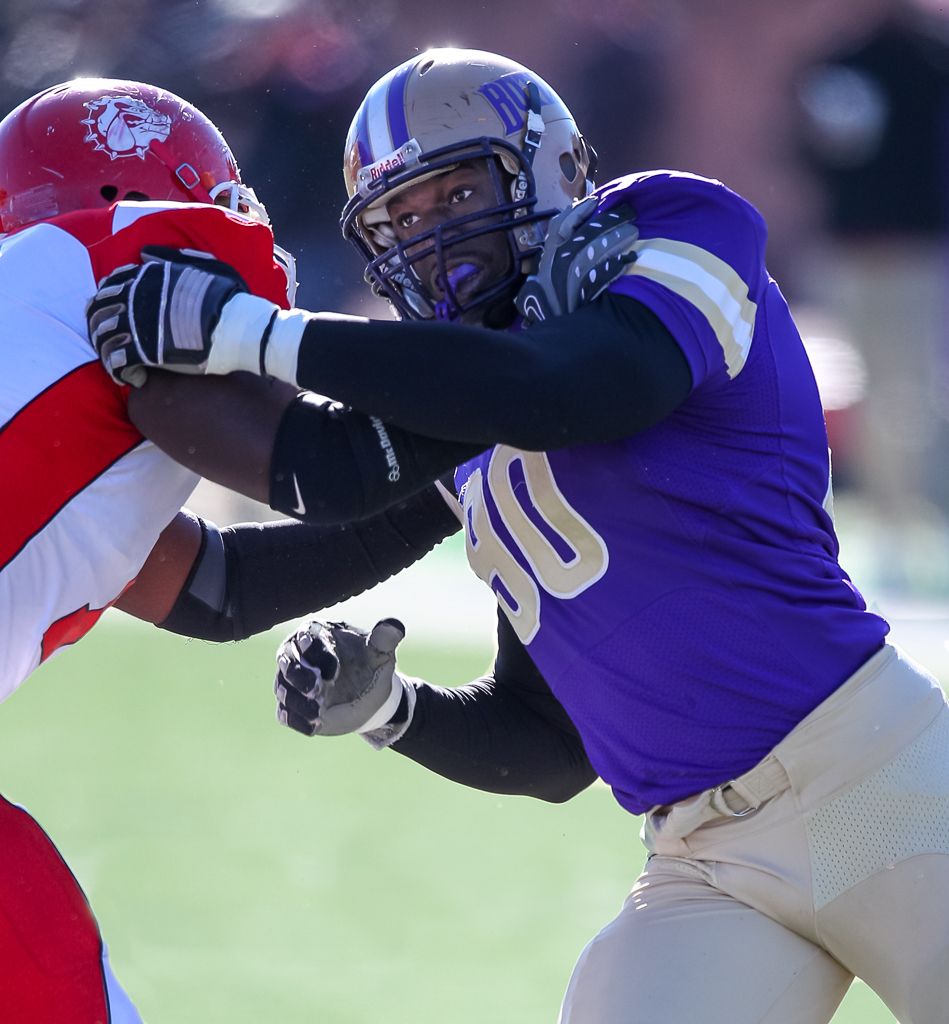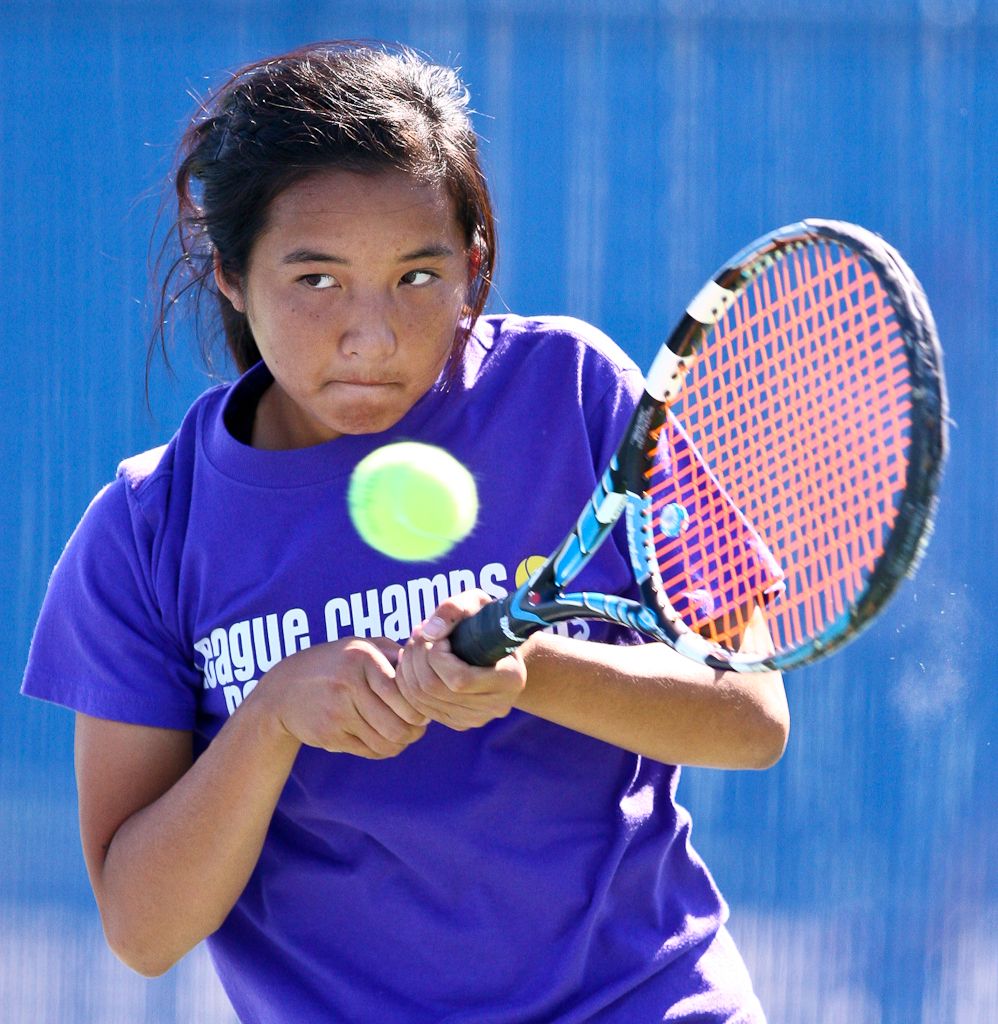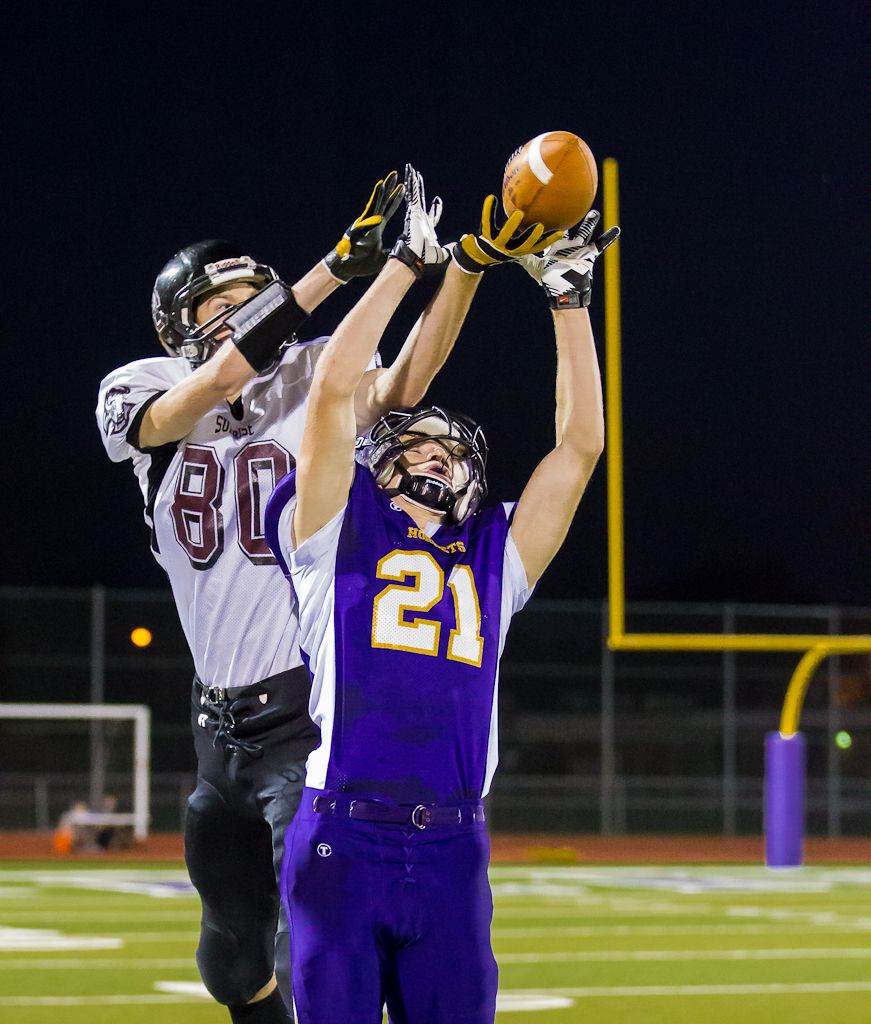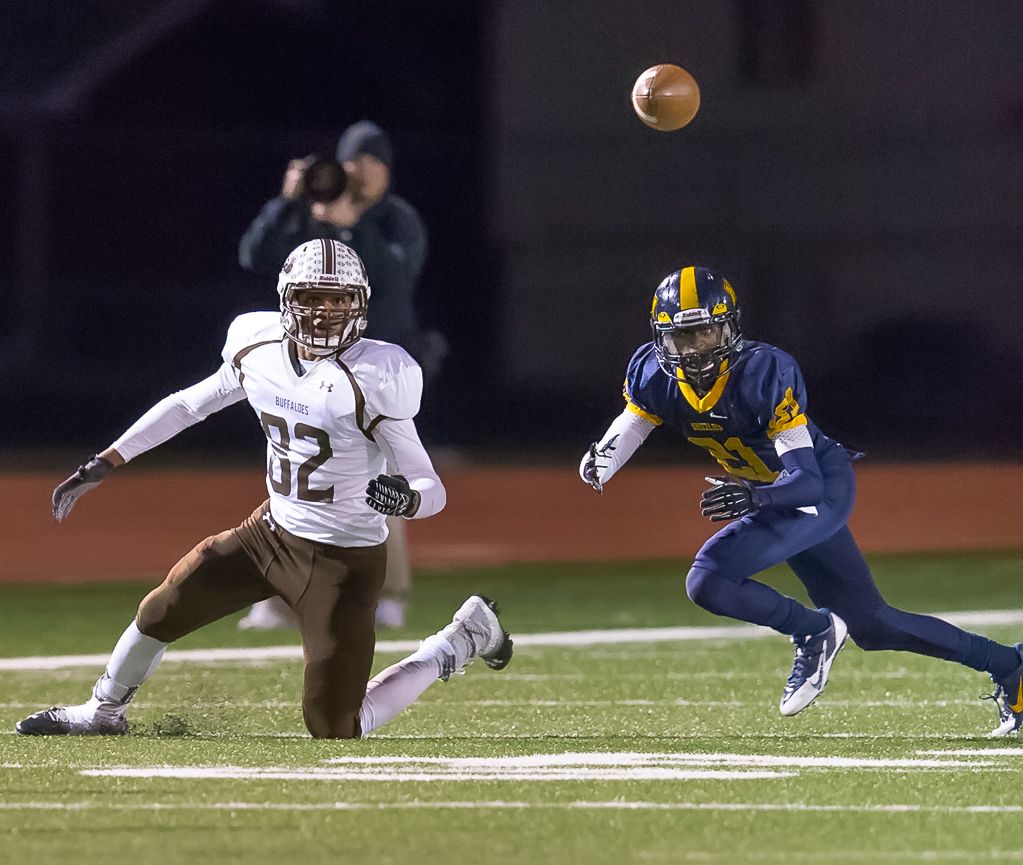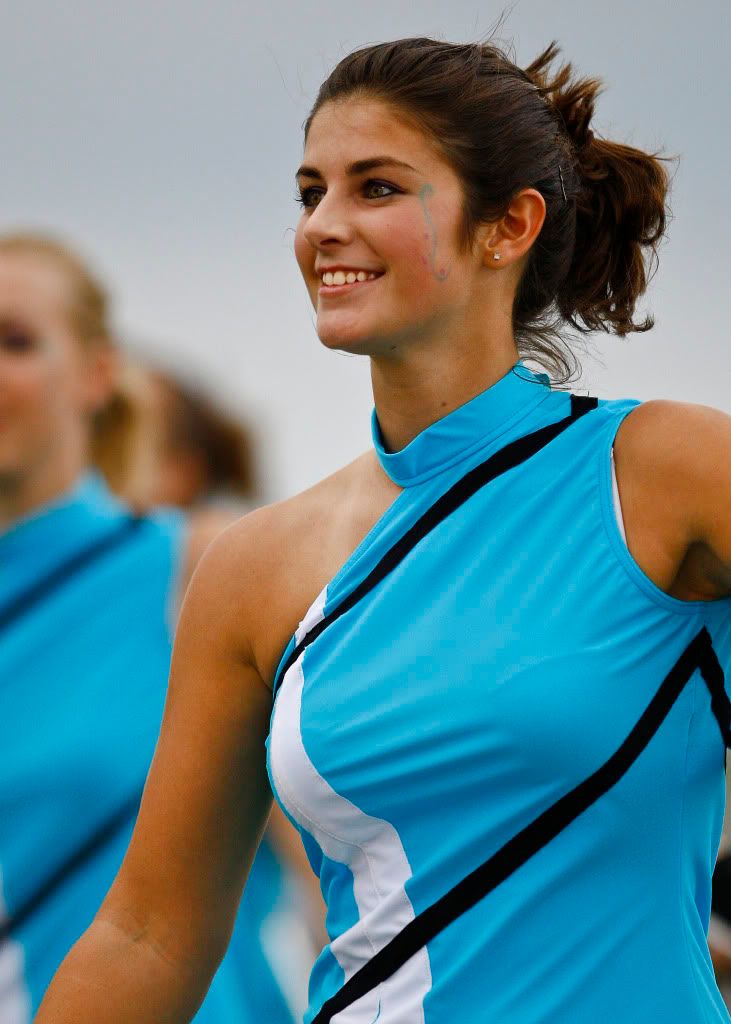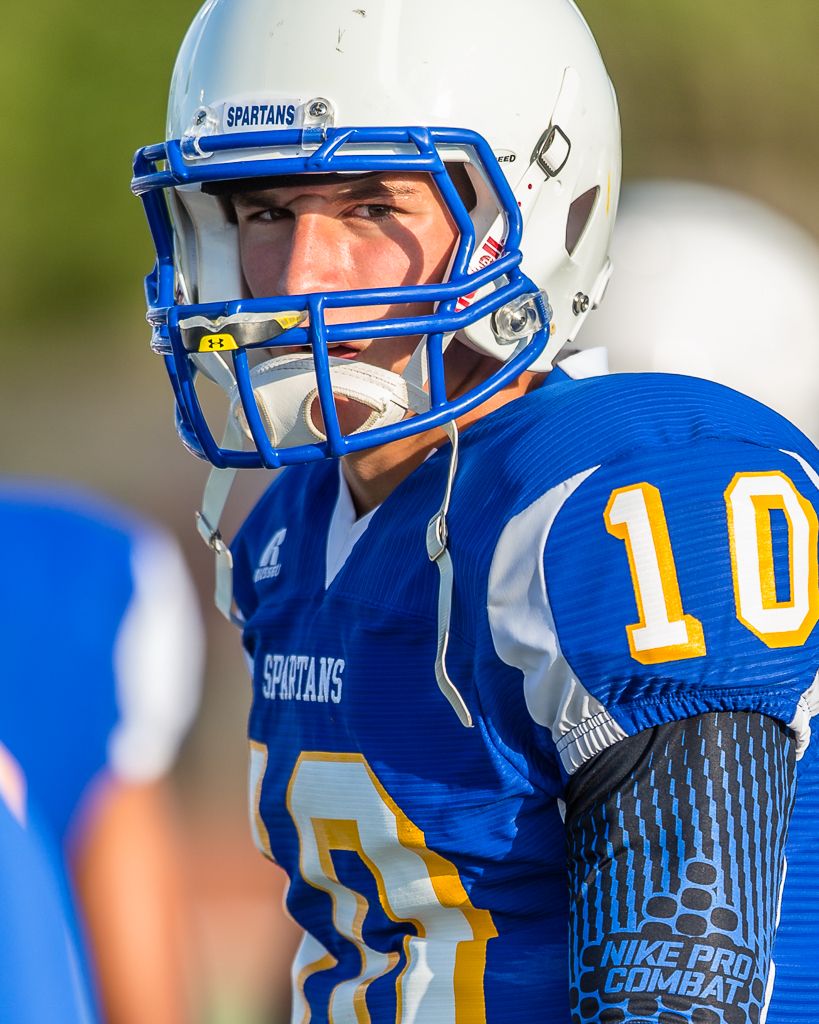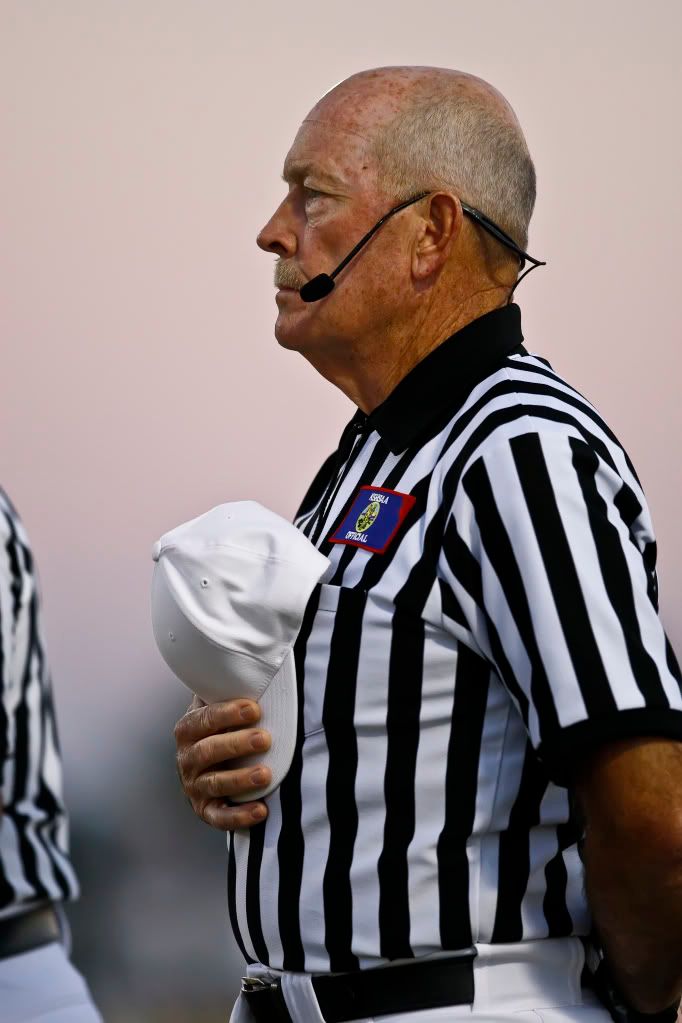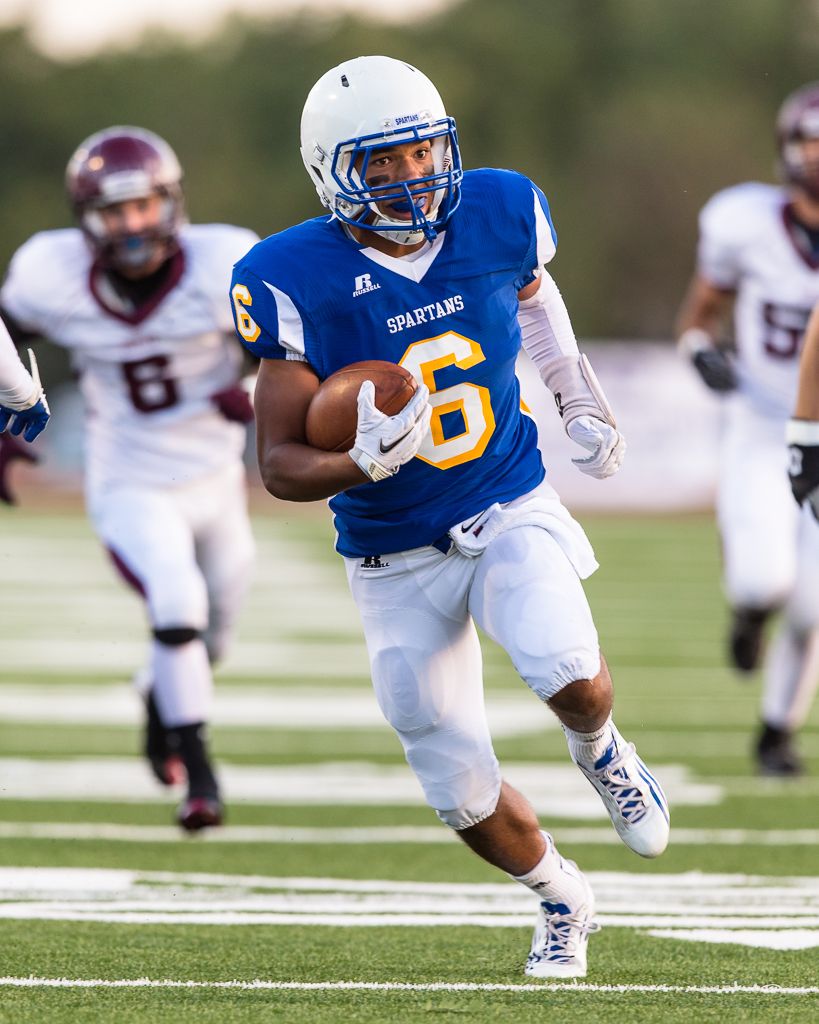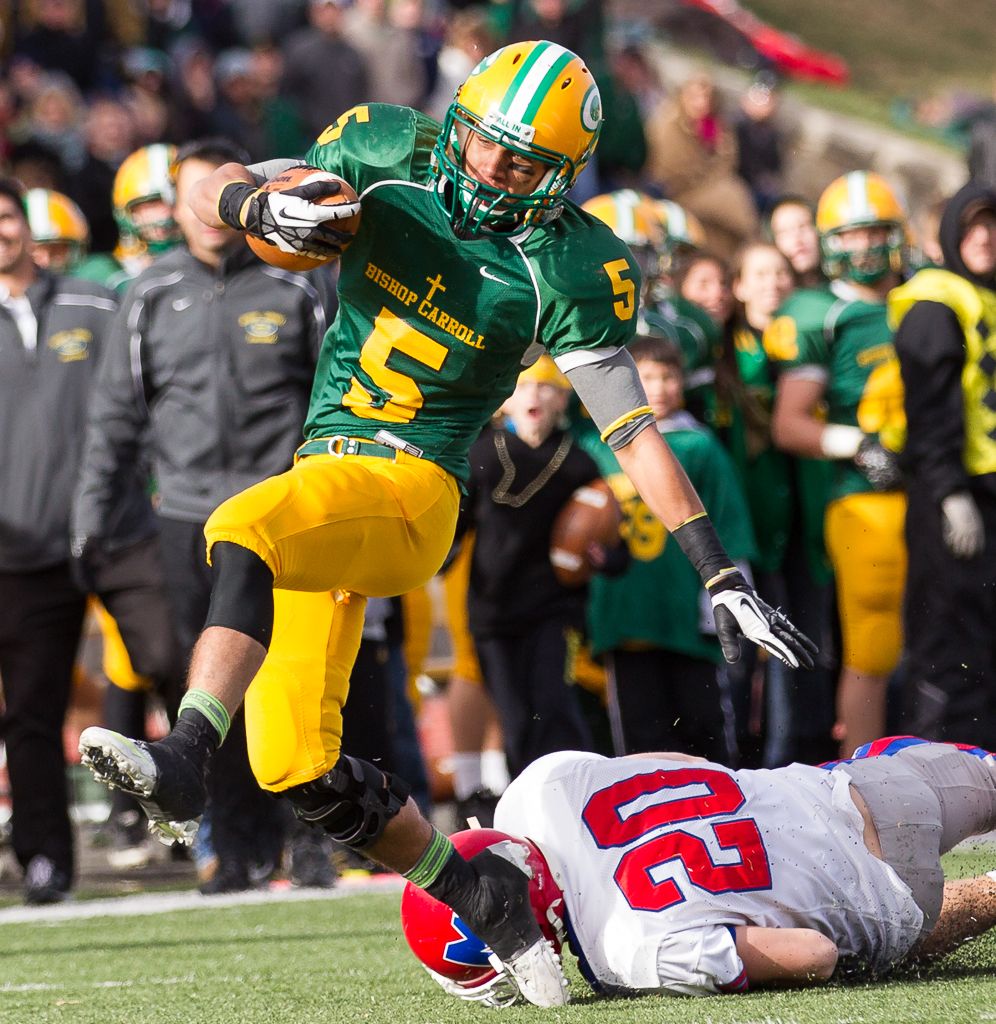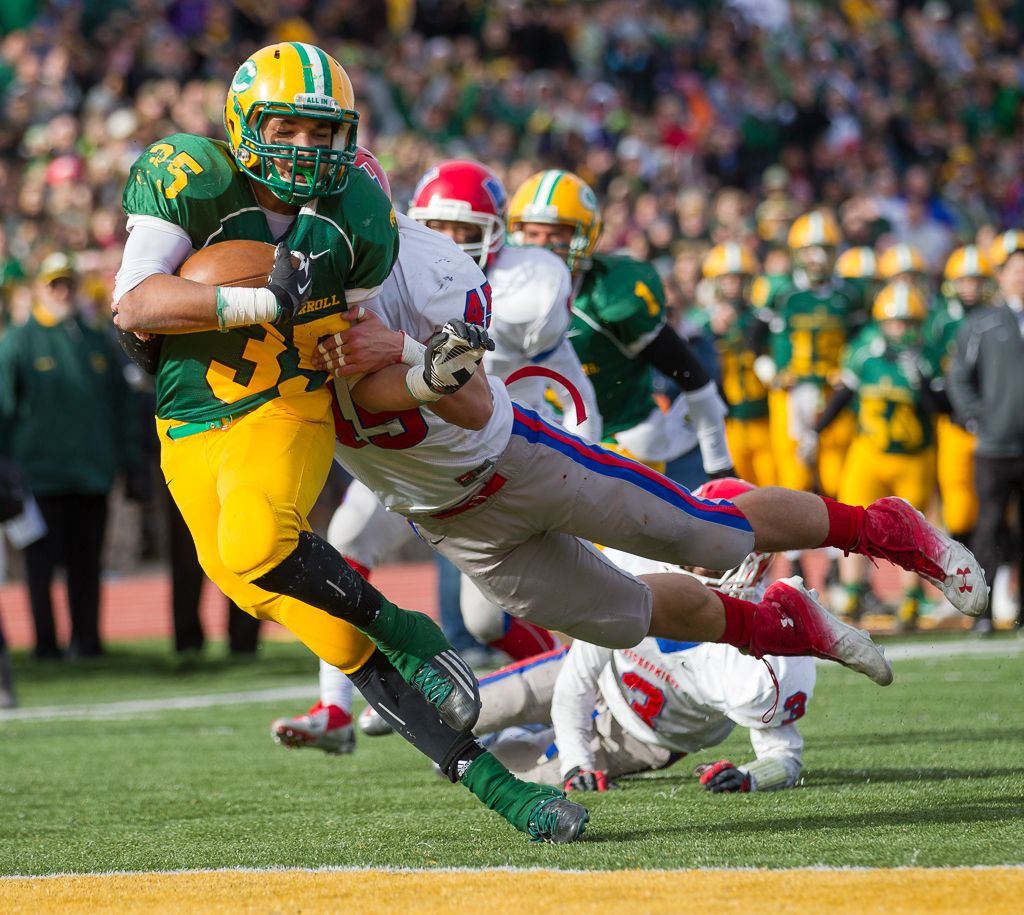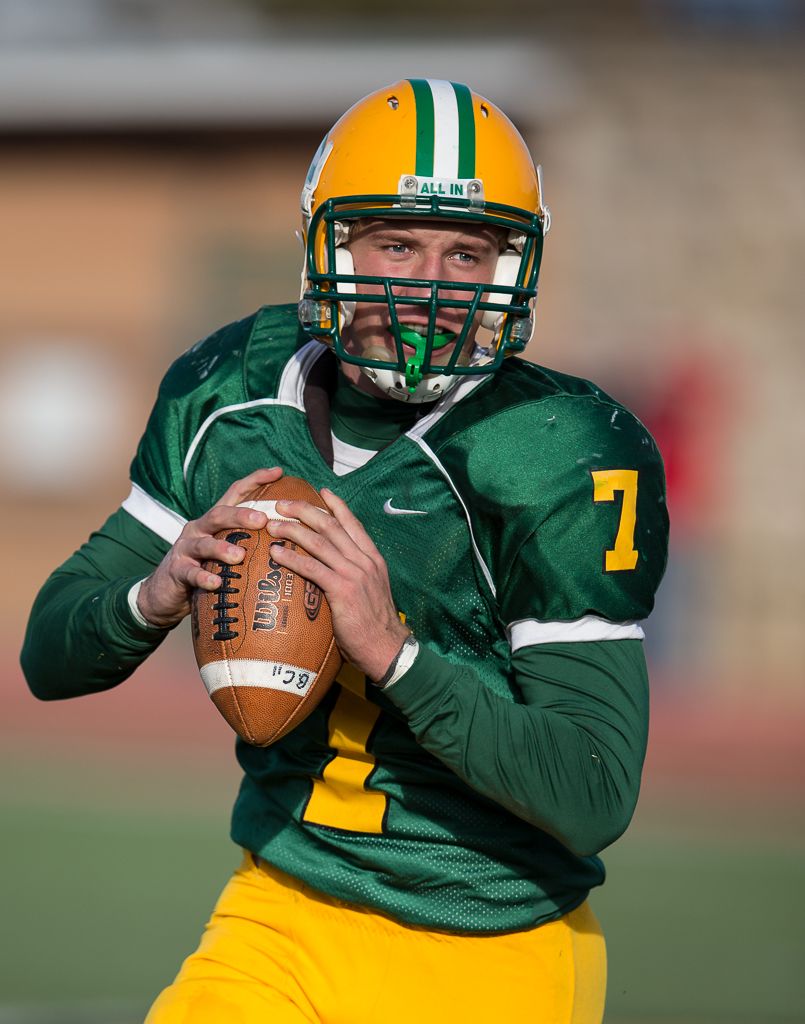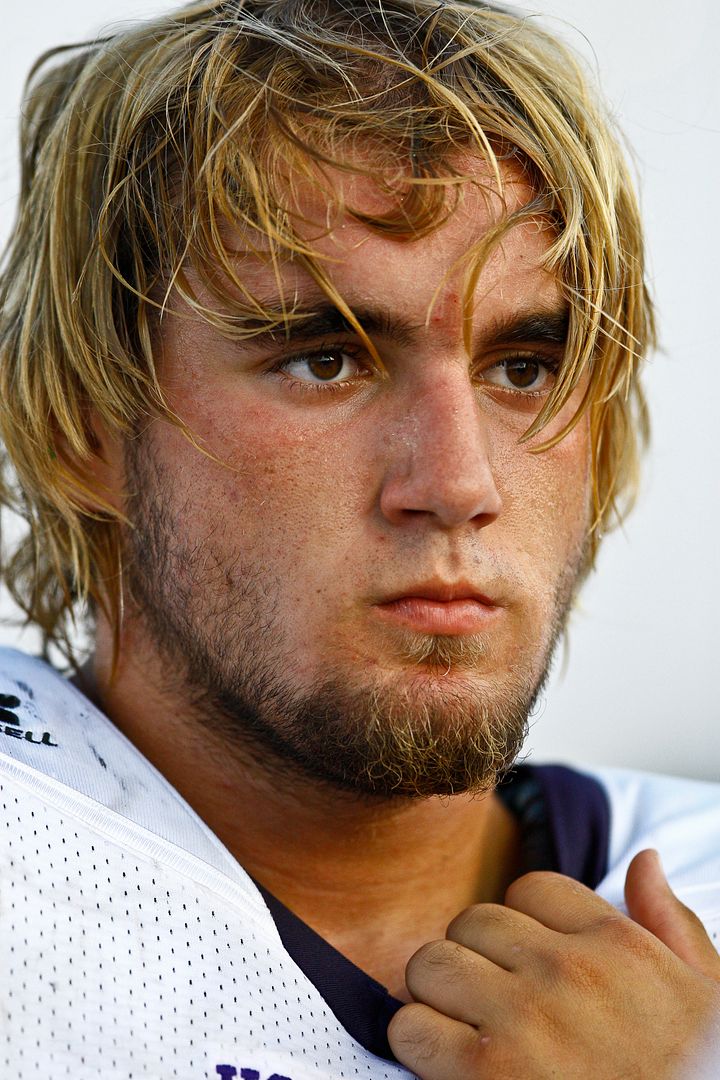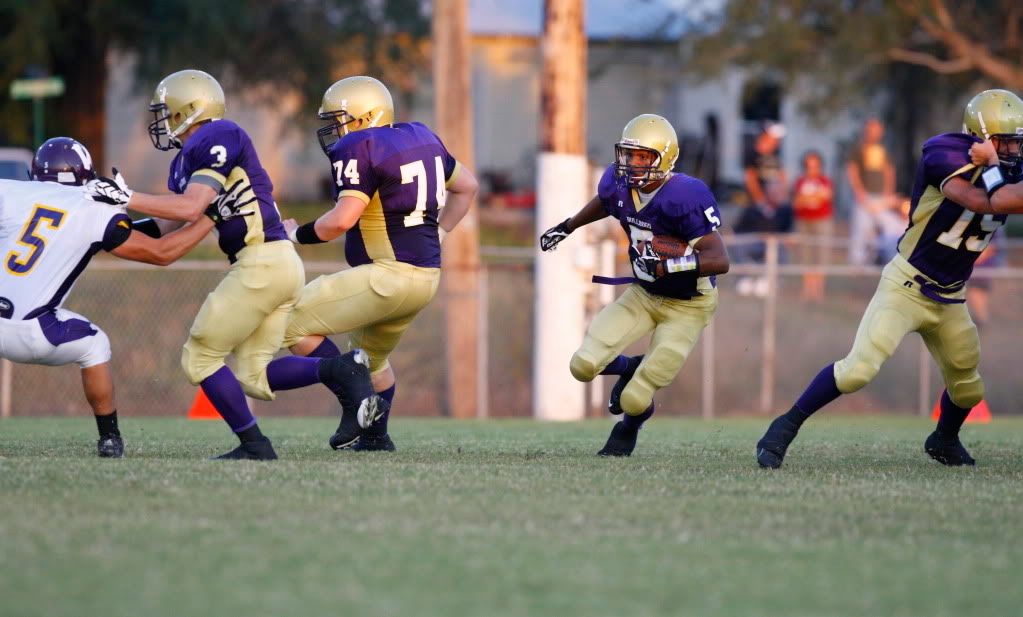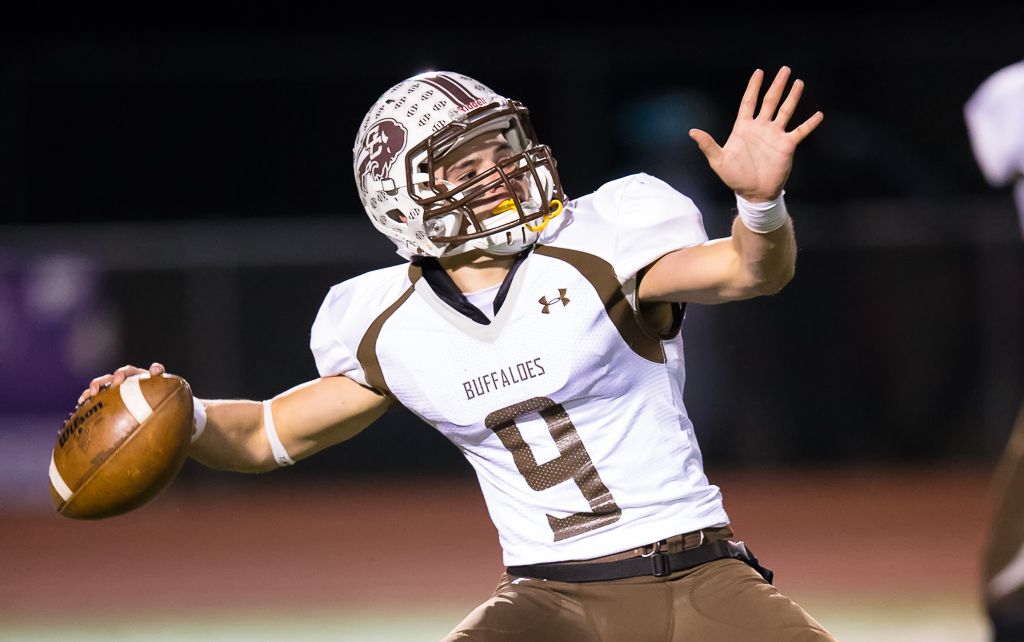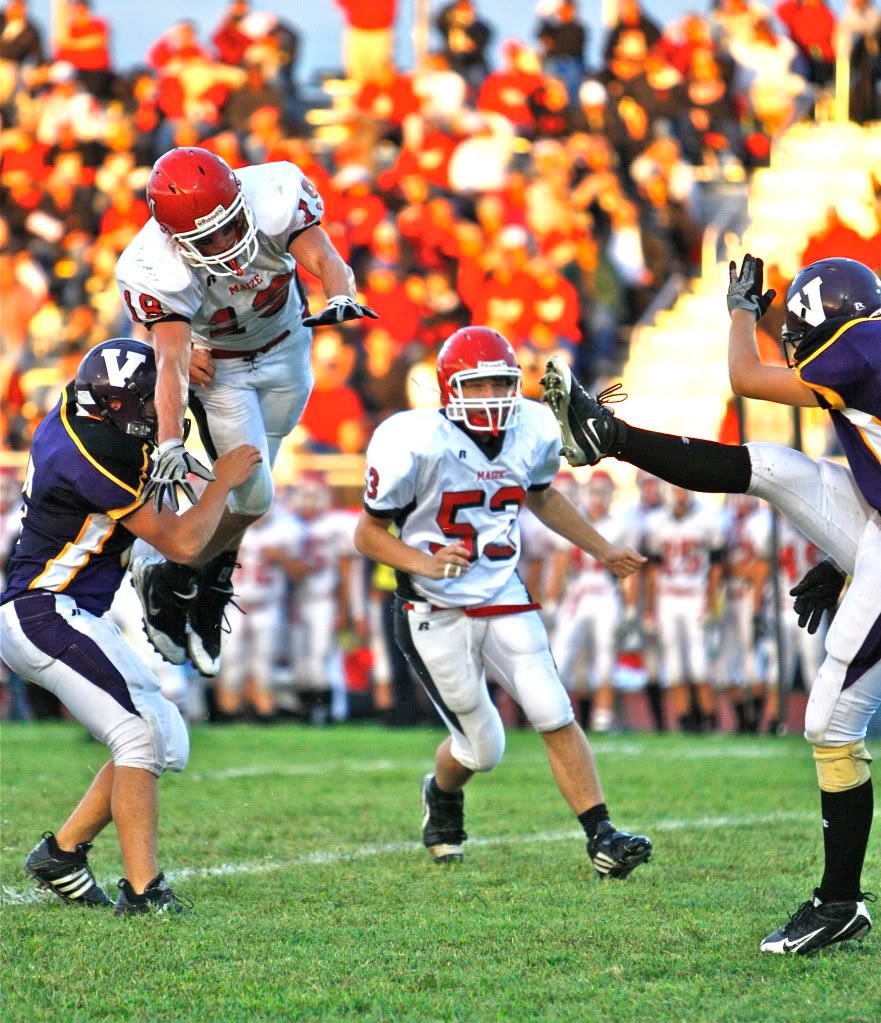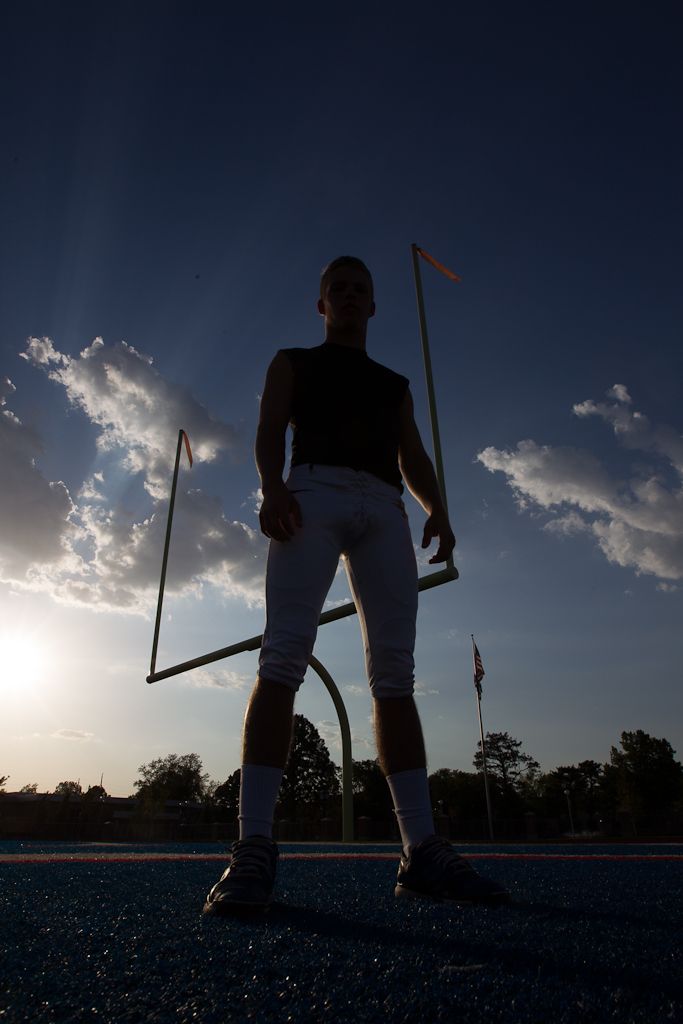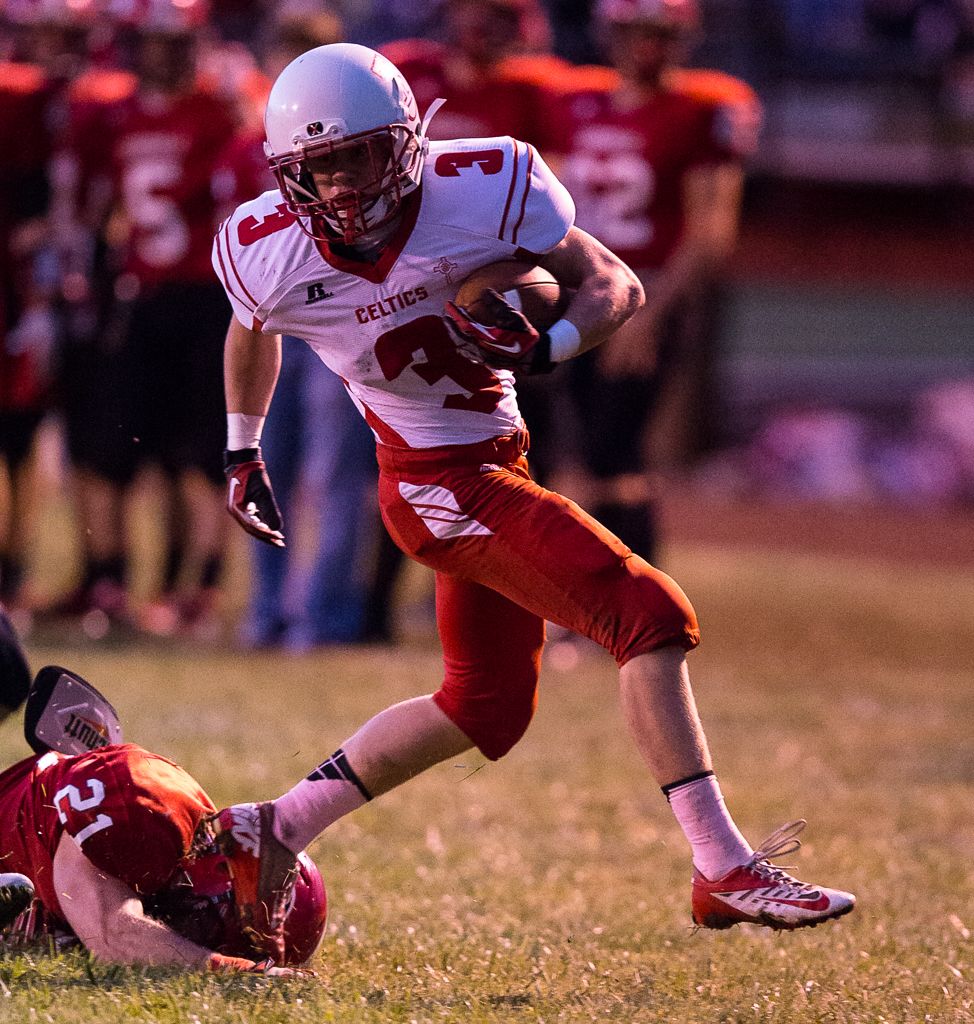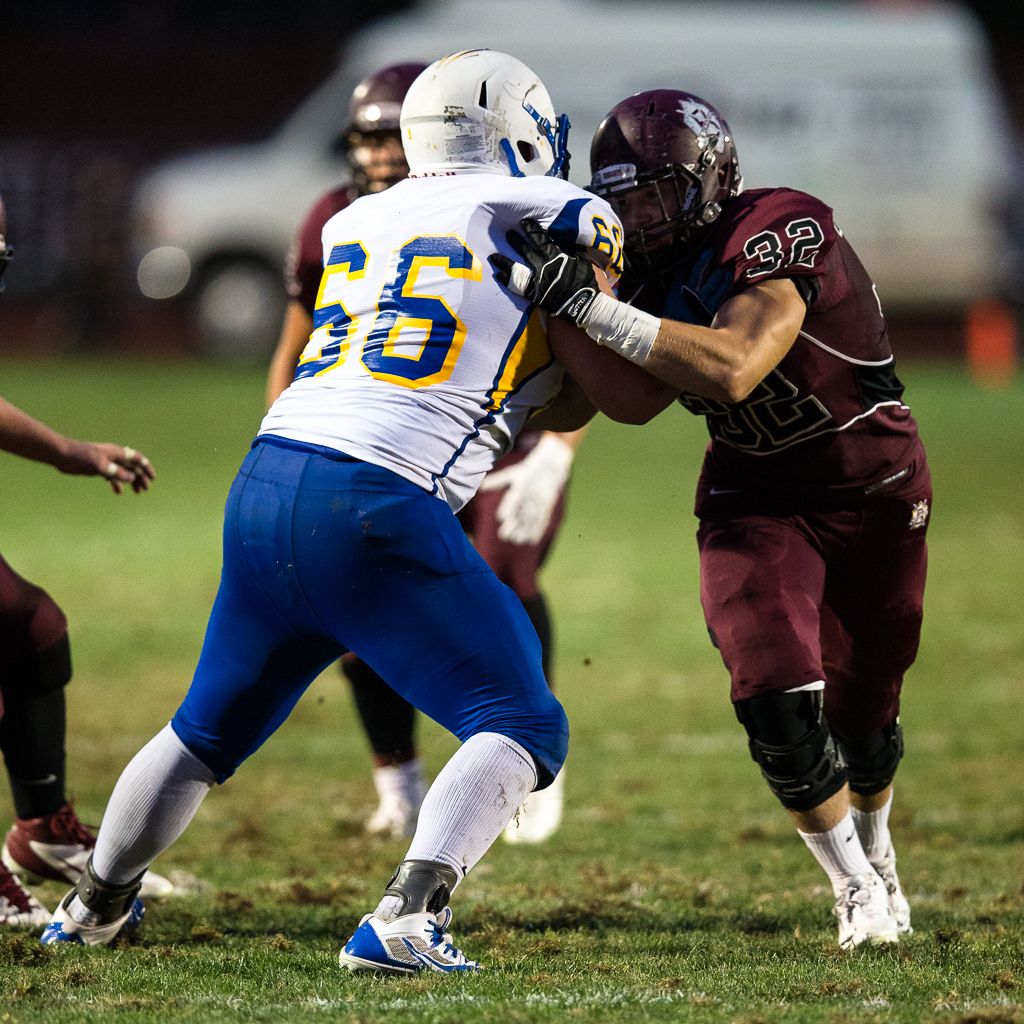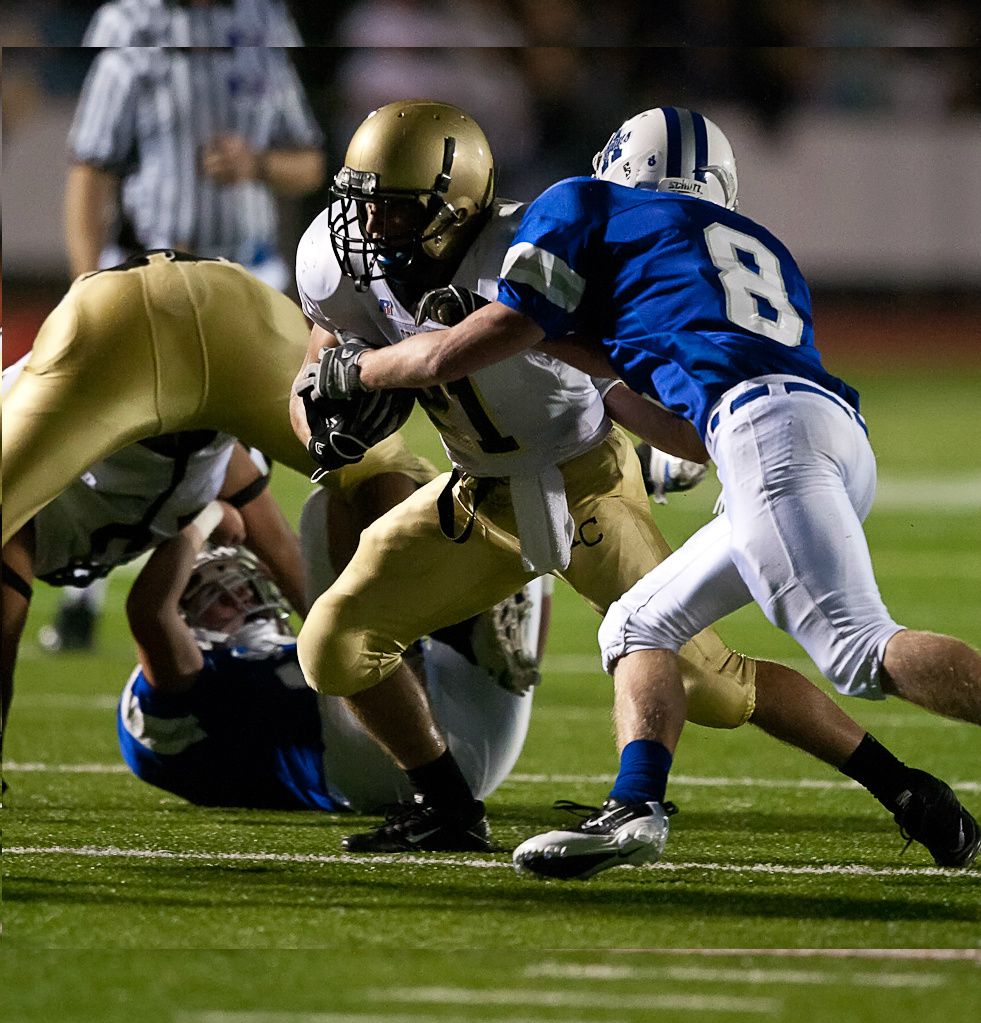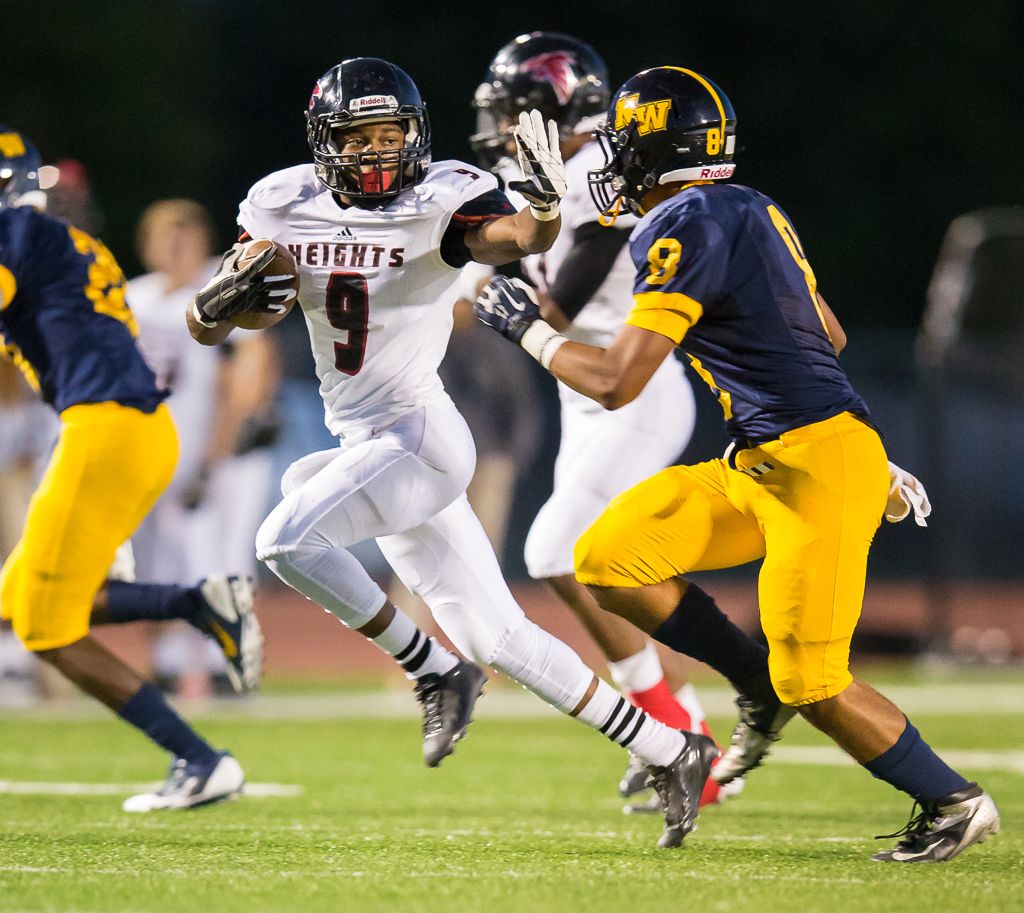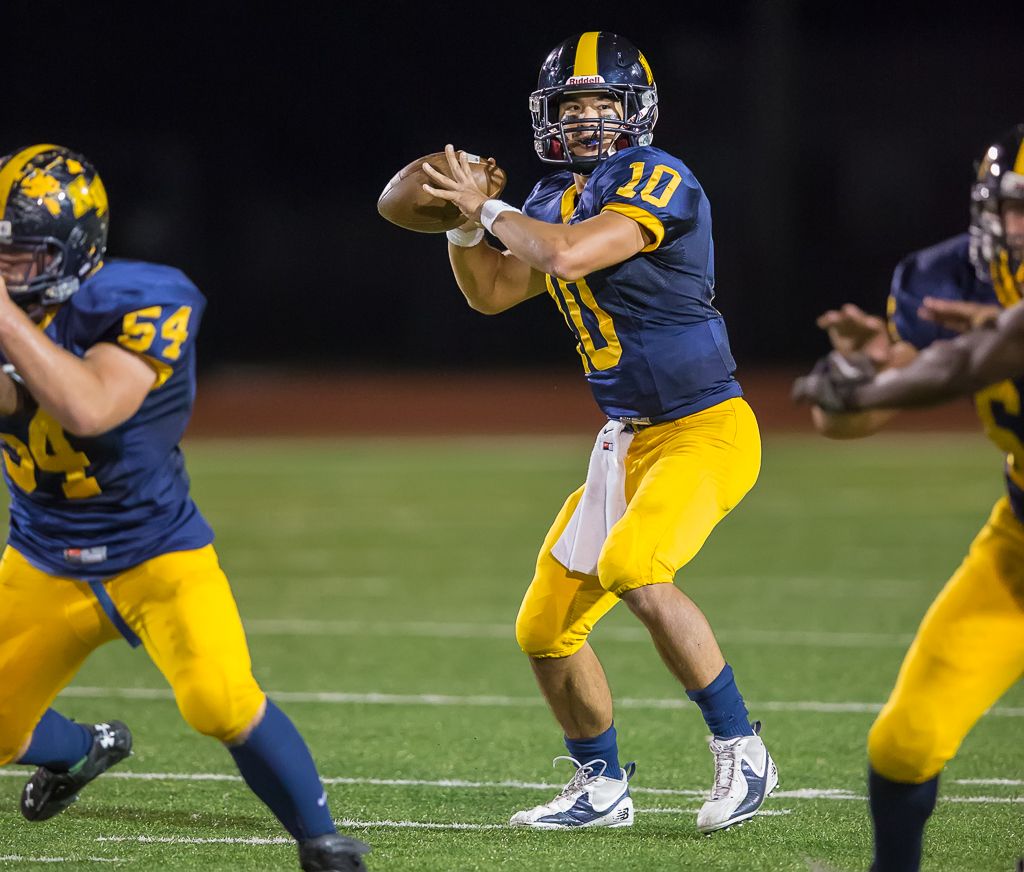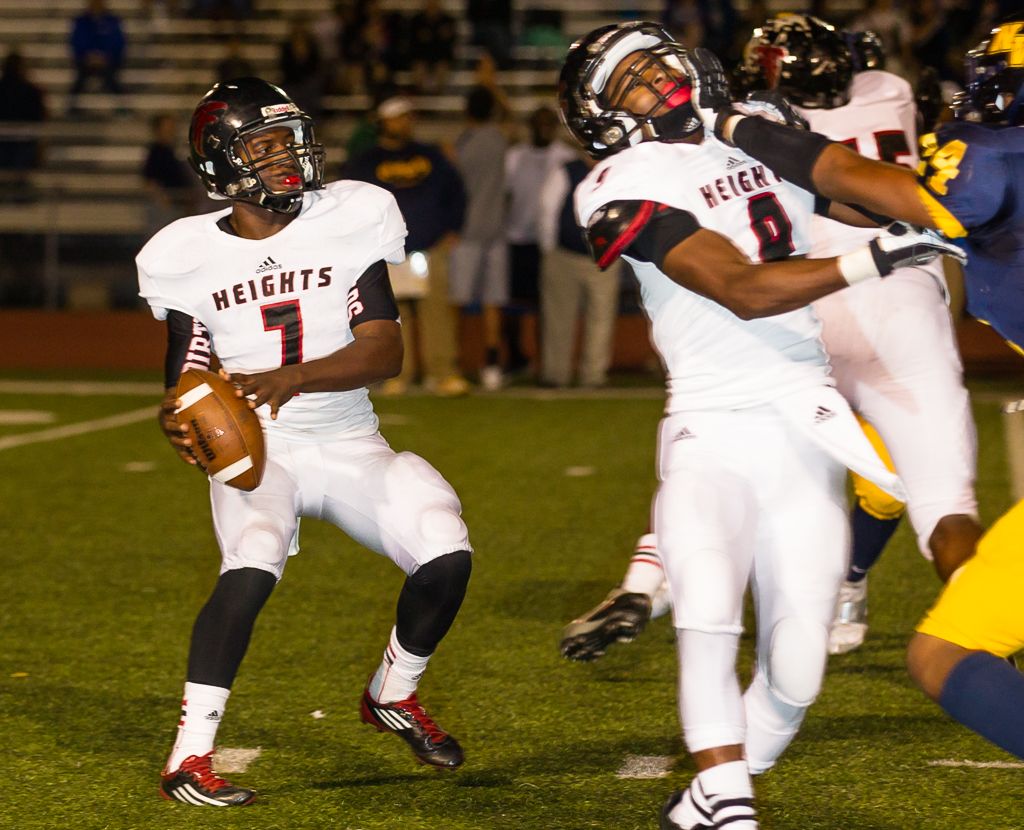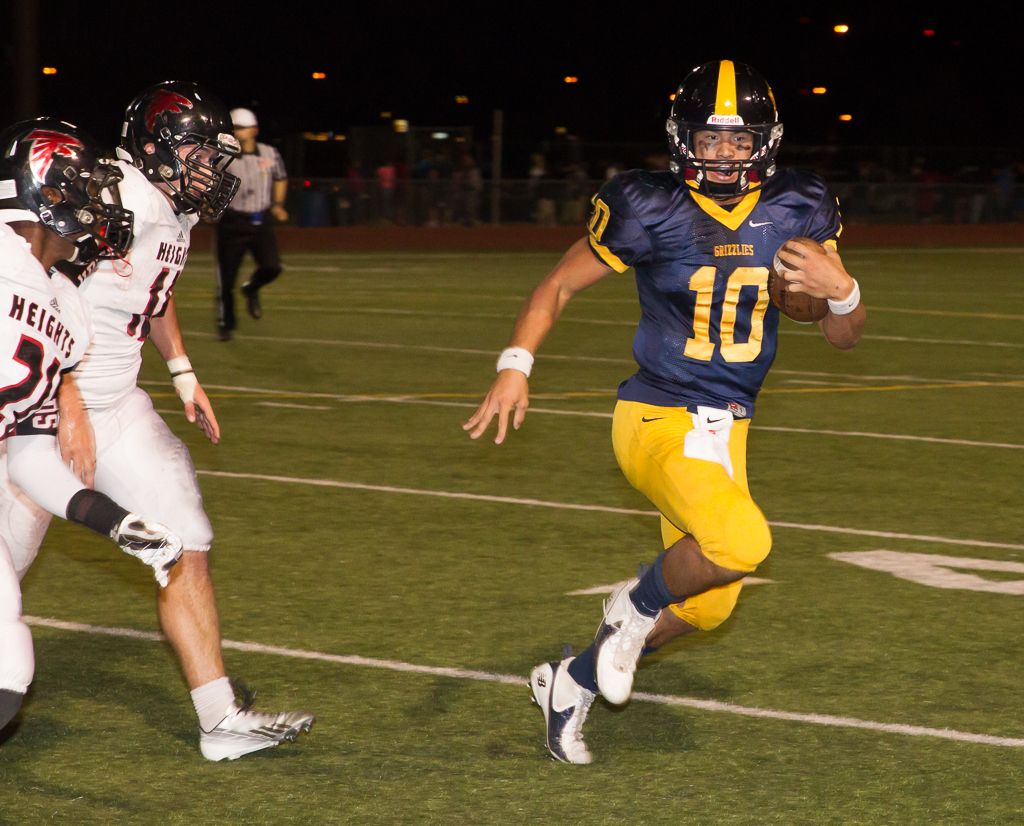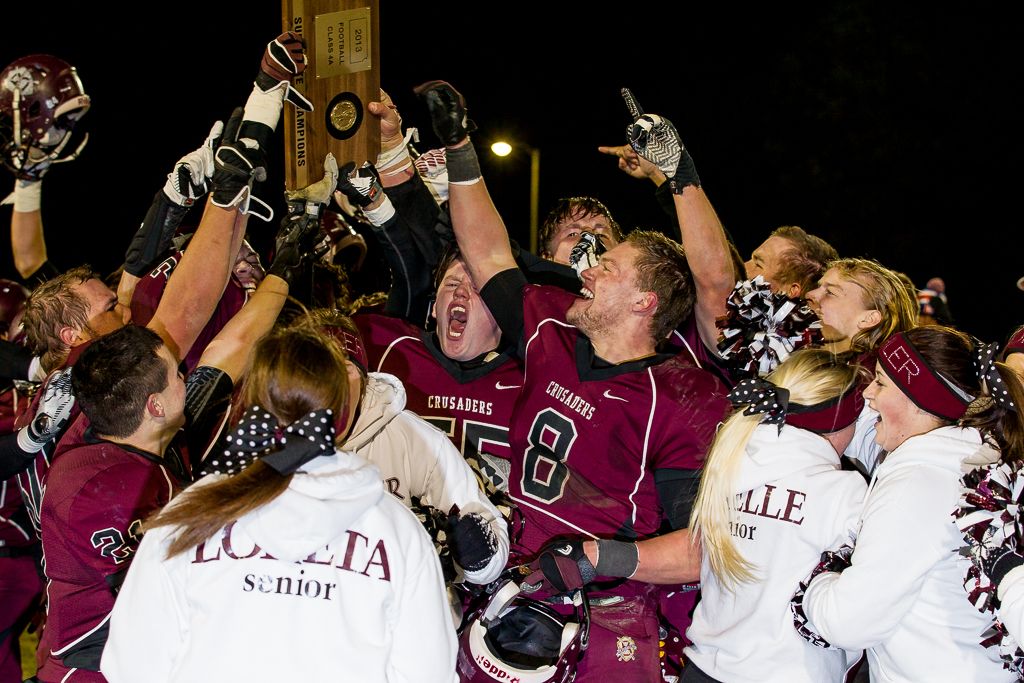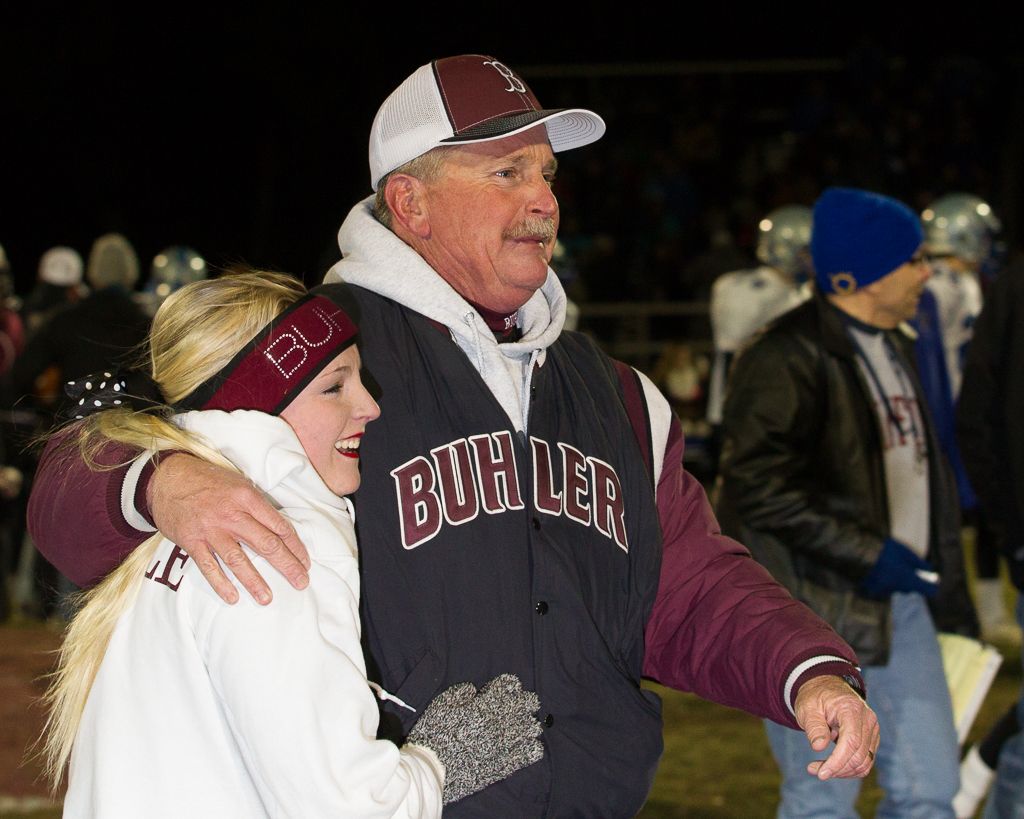Welcome to the Phil Zivnuska photo blog, Practical Sports Photography. I'll be posting photography tips, relevant images, and hosting discussions on topics related to photography. This is the place for requests, comments, and questions about all things photographic. The emphasis will be on sports but all photography is fair game.
Phil Zivnuska
.
Shutter Speed for Sports--What is the Magic Number?
Sports Photographers typically have a minimum shutter speed in mind when they shoot an event. They often disagree! So, how fast a shutter speed is needed to stop action? Keep in mind that these are my answers and that opinions vary.
Proper shutter speed (SS) is determined, in part, by the pace of the action. For grade school or middle school, 1/500 second (or faster) would be appropriate for shooting players. In high school, the athletes are moving faster, so 1/640 second is needed. Eliminating motion blur on the ball will require an even faster SS. Personally, I'm a sharpness freak so 1/1000 sec. is my minimum. That's because I want to be able to "Read the Ball" with sharp lettering. I'll go much faster to stop the ball in baseball or tennis.
When using a 400mm or longer lens, I'll sometimes adjust to 1/1250 sec. as a new minimum. Keep in mind that I shoot with top notch camera bodies (Canon 1D Mark IV and Canon 1D X) so I'm not afraid of using high ISOs to obtain a fast shutter. Once you master the rules, there will be times to break them. Panning and artistic interpretations are both valid reasons for a slower SS. You may want slight motion of the ball and still have the players sharp. This is a common way to convey the speed and motion in athletics.
Obtaining maximum performance from a digital slr requires that the photographer embrace the Manual, Aperture Priority, and Shutter Speed Priority modes available and move past the generic "running man" or other programmed modes.
1/1000 second, 300mm, f/2.8, ISO 4000, Canon 1D Mark IV, Canon EF 300mm f/2.8L IS
1/2000 sec, f/3.2, 300mm, ISO 250, Canon 1D Mark IV, Canon EF 300mm f/2.8L IS
3. 1/1000 sec, f/3.5, 400mm, ISO 1000, Canon 1D X, Canon EF 400mm f/2.8 IS
Next time: Get low for sports
Phil Zivnuska
www.zivnuska.zenfolio.com
How to Photograph Volleyball
copyright 2013, Philip S Zivnuska
Reproducing this tutorial in any form, in whole or in part, without written permission of Philip S. Zivnuska is prohibited.
How to Photograph Volleyball
By Phil Zivnuska
You might think it would be easy. After all, there are only 6 players on each team and the court is not all that big. Indoor volleyball, however, is one of the more challenging sports to photograph. The action is fast, the lighting marginal, players usually face the net and that net gets in the way of focusing. The key elements are the same as in most sports photographs; focus, face (especially the eyes), action, and the ball. “Shoot Tight and Crop Tighter” applies to volleyball too. This tutorial will discuss the elements needed to capture the 7 types of indoor volleyball photographs. A solid knowledge of dslr fundamentals is required. I write as tight as I shoot, so let’s start.
Your efforts will be far more successful if you learn the game, scout the teams, and study the players. Volleyball photography doesn’t follow the ball, it constantly anticipates where the ball is going to be and sets up for the shot ahead of time. Where will the serve be aimed? Why? Who will set the ball up for a spike? What direction will she (he) be facing? Which positions (players) will be doing the spiking and how do they approach the net from their respective positions? Don’t try to capture every hit of the ball. It can’t be done. Think one or two volleys ahead. Consider where you should be positioned to get the best capture of a particular position. Frame and focus on the player who will be hitting the ball before the ball gets there. The more you know about the game, the higher your capture rate will be. The examples here will be from ladies high school volleyball. If you shoot at this level, you will see that players who are novices will be unpredictable due to a lower skill level. Better teams will have a predictable strategy and the best teams will be sophisticated in strategy and disguise their intentions in order to fool the opposition and often you too!
The Prime Directive--Remember that the game is about the student athletes on the court, not about you, not about your pictures. The hierarchy of courtesy has the student athletes, AD, coaches, officials, parents, and fans all above the photographer. Stay out of harms way, blend into the background, be respectful, and if you are told to do something by an official or administrator, do it. If you disagree, comply now and discuss it at a later date. Build cooperative relationships with those who have authority/responsibility for conducting the game. Contact the AD ahead of time and learn the local rules for access. Get permission well in advance of the event. Talk to the refs before the contest to see where you may and may not go to photograph. Don’t push the limits. Did I mention building cooperative relationships with those who have authority/responsibility for conducting the game?
Philosophy--In my view, the best galleries are those which capture a variety of action from changing perspectives using different focal lengths. In order to accomplish that, I will go high, go low, go long (long focal length lenses), go wide (wider angle lenses), go to the side and go to the ends of the court. Here is a gallery of 8 shots using 8 different lenses at 8 different focal lengths from an assortment of elevations:
http://photography-on-the.net/forum/showthread.php?t=1091324
For the lowest perspective, the camera was resting on the floor. To gain a high perspective, I will haul a 400mm f/2.8L to the top of the rafters (as in the LR Event illustration) if it results in a better image. Obviously, the gear available, the venue, and the access permitted will affect what is possible. The complete photographer will be able to adjust to a variety of circumstances and still get the job done.
We will talk about the gear, the light, camera settings and the venue later. Let’s look at and analyze the 7 types of volleyball images now.
Serve, Pass, Set, Spike, Block, Jube, and Event Images
The Serve
The first image to consider is the serve. This shot is usually easy to focus, repeatable and readily available for capture. Sports photographers often attempt to photograph the moment of impact with the ball and they end up with a shot where the hitting arm blocks the view of the face. Consider the images on the left side of the illustration below. This moment is easy to capture and is often very flattering to the player as the arms provide a beautiful frame for the face. Shoot tight. Let the parents know about your photo. Sell them a print.
Since this position is predictable and repeated several times, it allows the photographer to vary his background. On the upper left, the fans and bleachers provide the setting. The lower left shot uses the scoreboard. Look for a pleasing backdrop and change your position to get a good view of the player and have the crowd, scoreboard or perhaps the flag complete the scene.
The movement is slower at this moment, so a one stop slower shutter speed and lower ISO can be used, if needed, to gain image quality. Taking a moment to think through the settings and background will help give you a winning image.
On a jump serve like on the right, getting low will emphasize the athleticism involved. Shooting from a balcony high on the opposite end of the court with a long telephoto will allow you to look straight at the player and give you a better chance to get a good view of the face. The venue, access and/or lenses available may determine which approach you choose to take.
UL-- 1D X, f/3.2, 300mm, 1/800 sec, ISO 6400
LL-- 1D Mark III, f/4.0, 135mm, 1/250 sec, ISO 400, Strobed with 4 Alien Bee B800s
R -- 1D Mark III, f/3.2, 70mm, 1/320 sec, ISO 400, Strobed with 4 Alien Bee B800s
The Pass (Bump, Bump Pass, Overhand pass)
These can be dramatic shots that are often easy to focus and capture. Choose a back row player whose face you can see clearly and who you determine is likely to return the serve (or spike). Good teams will pick an opposing player they want to force to return their serves and they will hit the ball to that person. Lesser teams are happy just to serve the ball inbounds. A weak player may be unable to make the return at all. Even if they can make a play on the ball, a poor pass may compromise the resulting set and therefore impair the opportunity for a successful attack. Here’s where knowledge of the teams can improve your chance of success as a photographer. A good coach will scout the opposition to gain an edge. So can you!
Note: a ‘Bump’ is an underhand pass.
Consider the following images of players digging for the return:
Three of the shots were taken from a vantage point quite close to the floor and the fourth (upper right) was shot from a very high angle looking down on the athlete. The image gains drama if the camera is at or near the floor.
The image on the lower right was taken almost abeam the player and the result is a profile shot. Moving to a 45 degree angle (lower left) gives a improved view of the face and both eyes are visible. Shooting under the net from the opposite side of the court (upper left) gives the best view of the face and especially the eyes. This is a superior quality shot but the sight line will often be blocked by another player. If you are positioned at the end of the court and the serve is being made from near you toward the opposite side, see if you have a clear view to a possible returner, pre-focus on that player, and with a bit of luck, you will get a shot of that player similar to the photograph on the upper left. Try it. As you frame this shot, remember that the players will often move forward and down to the floor as they dig to get a short serve or spike. Get low. Anticipate. Change the focus point if it will help frame the shot and capture the ball in the image. You will often guess incorrectly and focus on the wrong player as you anticipate the return. That’s OK. It’s part of the challenge. Welcome to volleyball photography.
UL-- 1D X, f/3.5, 200mm, 1/1000, ISO 3200, 70-200mm f/2.8L IS II
LL-- 1D X, f/2.8, 182mm, 1/1000, ISO 3200, 70-200mm f/2.8L IS II
UR-- 1D Mark IV, f/2.8, 400mm, 1/1000, ISO 1600
LR-- 1D Mark III, f/4.5, 85mm, 1/250, ISO 400, Strobed with 4 Alien Bee B800s
The set
The setter typically faces the same side of the court every time which is toward the strong side outside hitter (left front for right handed outside hitters). She is most often looking up to see the ball (if it is to be an overhand pass). Position yourself to see her face. Since the setter is looking up, a high vantage point is preferred to capture the action and the eyes. I’ll usually use a center focus point, center it on the face, and try to shoot tight as in the image on the right. The full body shot on the left side was framed to capture the sign on the scorers table for context because this was the very first match held at a new high school.
A wider angle will often capture the spiker preparing her move to the net. Both types of images can work.
Left: looking down from the bleachers. Coach’s daughter, brand new “Home of the Hornets.” I knew the paper would love this shot and use it. [Wrong again!]
Right: looking down from a balcony. Note the eyes of the right outside hitter (weak side) locked on the ball to see if the set is coming to her.
L-- 1D Mark IV, f/2.8, 200mm, 1/1000, ISO 4000
R-- 1D X, f/3.2, 300mm, 1/1250, ISO 12,800
The Spike (Hit, Attack)
The spike is considered the pinnacle of action and no gallery is complete without some images of it. Gyms with a balcony and most arenas will offer the opportunity for the photographer to get high and shoot down on the play. This yields views of offensive players where the faces are not obstructed by the top tape of the net, hitters seem to be jumping higher, and focusing is far simpler. The three hitters pictured in the red/black uniforms below were all shot from the top of an arena (see LL event image below) with a 400mm lens on a 1.3 crop factor camera body .
The players on the offensive left and right front are the outside hitters. For right handed attackers (the majority), the left front is the key position and left side hitter is hitting from her strong side. She is often the best spiker and most athletic. The other front row players are the middle and the right. Shoot these three tight enough to see the intensity/emotion of the players. Full bodies are not required. Strong side (left side for right handers) outside hitters usually approach the net from about 3 steps back. Track them through their approach and hit. Middles and weak side rights will sometimes have set plays to get them in position to attack. Study your team’s front row strategies.
Spikers hitting on their strong side will start out looking toward the setter/ball and their faces will rotate with their bodies as they strike the ball (UL). Positioning yourself 30 to 80 degrees to the net is ideal. Any less and you risk having the hitting arm blocking the face. The face will follow the flight of the ball. Middles will often hit sets that are lower and have more tempo than the typical higher set to strong side outside. They may aim left or right with their spikes to avoid a blocker.
If you can’t get high, you’ll have to focus through the net. The white tape on top of the net is often problematic for obscuring the face. Get higher or lower if you need to. In the LR shot below, the background is dark and the black netting is almost invisible against it. This helped me be able to focus on yellow #23. If the netting is interfering with auto focus, first try adjusting the cameras focus settings (number of aux points, location of focus point, sensitivity etc). Sometimes you can use a low focus point aimed on the legs below the net to get a good result. Every camera model is different and you may need to experiment to see which settings track best. Remember in your framing that hitters will jump and reach up to hit the ball. Allow room at the top of the frame and choose your focus points accordingly. Tight, properly focused images of spikers are challenging to capture but worth the effort.
The dof at 300mm and 50 feet is 1 to 1 1/2 feet at f/2.8 depending on crop factor.
Tighter is better. Tighter is more challenging. Lots more.
LL, UL, UR-- 1D Mark IV, f/2.8, 400mm, 1/1000, ISO 1600 High vantage point looking down.
LR-- 1D Mark IV, f/2.8, 300mm, 1/1000, ISO 4000--Camera is net high so face is close to getting obscured by the tape.
UR, LL: eyes follow the ball on the spike follow through
http://photography-on-the.net/forum/showthread.php?t=1242386
Block
The block has challenges similar to the spike. Try focusing through the net. However, since the blockers are positioned at the net, using a low focal point to focus on the legs may work in a pinch if the auto focus locks on the netting. Use back button focus to pre-focus (use the leg trick only if necessary) and adjust as needed. Don’t forget to frame the shot with space at the top. Blockers often come in pairs and rarely, a trio. Middles are often key blockers. They are usually tall and part of the strategy is to have the middle join an outside to block a spike. A good offense will try to deceive the middle into being out of position. Their goal is to have the spiker hitting against a single blocker rather than a pair of defenders. The tempo and direction of the set is part of that deception.
L-- 1D Mark IV, f/2.8, 400mm, 1/1250, ISO 6400
R-- 1D X, f/3.5, 300mm, 1/1250, 12,800
Jube
Volleyball has jube (jubilation or celebration) that is as good or better than any high school sport. Capturing that jube isn’t hard, it just requires the photographer seek it out. Every team will have one or more players who are exceptionally expressive. Take note of who they are during the games. When it gets to the final 2-4 points in a close game, I will stop shooting action and begin focusing almost exclusively on emotional jube shots. The proper time to switch will be marked by a soaring intensity that is unmistakable. Sometimes the celebrations will be directed at teammates and other times toward the coach/bench. Try positioning yourself behind the bench (emotion is often expressed in that direction), track the most animated player(s) and get those emotional peaks and valleys recorded. Get close and fire away in short bursts. After that last point, move around. Include the coaches if possible. Group and individual shots both work. Make the viewer of your images feel the joy and excitement. These shots are a must have.
UL-- 1D Mark IV, f/2.8, 400mm, 1/1000, ISO 1600
UR-- 1D X, f/2.8, 140mm, 1/1000, ISO 3200
LL-- 1D Mark IV, f/2.8, 200mm, 1/1000, ISO 6400
LR-- 1D Mark IV, f/2.8, 135mm, 1/1000, ISO 6400
The Event
There is a photo story behind and around every match. The venue, cheerleaders, fans, timeouts, faces in the crowd, anything associated with the contest can be a source for an image. Supply the viewer with an experience of the event.
UL-- 1D Mark IV, f/2.8, 400mm, 1/640, ISO 2000
UR-- 1D X, f/2.8, 70mm, 1/1000, ISO 6400
LR-- 1D Mark IV, f/4.0, 15mm, 1/800, ISO 3200
LL-- 1D Mark III, f/2.8, 16mm, 1/800. ISO 3200
Nitty Gritty
The tutorial so far has covered great ways to get the typical shots in volleyball.
BUT... ... . Something’s missing.
What’s missing is the heart, the soul, the hand to hand combat aspect of the game. There is something powerful, vibrant and dynamic about images where you get physically close to the action and capture net play when two or more players are battling at or above the net. Get low to the floor, be as close as permitted, use medium focal lengths and shoot when the peak action is in close quarters at the net. Focus can be tough, faces difficult to see, other players can block your view, access can be hard or impossible to get, plus there is no guarantee you’ll get a great shot anyway. Nonetheless, it is worth the try--especially on teams that have active, talented, middle hitters. The action will be fast and a responsive camera body and lens really help. Don’t try to shoot the outside hitter on the far side of the court. Too far away. Find closer action. If you are sitting on the side next to the strong side outside hitter, try a wide angle view of her spike when the opponents are doing a double block. You won’t see the face of the spiker but she will seem to be 10 feet in the air and the blockers will be prominent in the image. It’s fun to try this shot.
You can tell I love the nitty gritty part of the game. Just know that it can be frustrating to capture. Start with the conventional shots. Add these for spice.
UL, LR-- 1D Mark III, f/2.2, 135mm, 1/1000, ISO 3200
UR-- 1D X, f/2.8, 102mm, 1/800, iSO 6400
LL-- 1D Mark IV, f/4.5, 65mm, 1/1000, ISO 12,800
Lighting, Gear, Camera Settings, and Venues
Light has a huge role in determining which camera bodies and lenses can be used as well as affecting the final image quality. There is rarely any excess quantity of light and that drives the exposure settings. Use f/2.8 lenses (or faster) if at all possible. An f/4.0 lens will have half as much light to focus, require either a slower SS or higher ISO, and have a wider depth of field (dof). A 70-200mm f/2.8 lens is a great place to start for volleyball and much of sports photography in general. Since I use a variety of focal lengths, my lenses for volleyball are now all f/2.8. Shooters on a tight budget may want to try the 85mm f/1.8, the wonderful 135mm f/2.0 or other fast primes they already own. Ultra large apertures bring in more light but at the expense of a very shallow depth of field. My images are made exclusively with Canon gear but Nikon makes excellent products as well. Don’t change brands to chase the latest offering from a manufacturer. Trading lenses to match the body is far too large a hassle. I prefer a SS of 1/1000 and that speed will allow you to read the ball. Slightly slower is OK, especially for non-telephoto focal lengths. Use a SS of at least 1/640 unless you choose slower speeds for artistic reasons or because low light and high ISO noise force it. Camera bodies that have good image quality at ISO 6400 are wonderful and increasingly available for modest budgets. ISO 3200 at f/2.8 will work if the lighting is above average. Take a few test shots to determine your exposure settings and then enter those in Manual mode. I use the histogram and chimp on the lcd to evaluate the exposure. Expose to the right but don’t burn out the highlights. If you don’t use the histogram or don’t know how to use it, learn and use it now. That knowledge will help in all of your photography, not just volleyball, to properly expose and post process your images.
Mandates for energy efficiency have been a boon to lighting advances. Light is getting brighter with improved color rendering at many facilities in the US. Notice the photos on the right side of the jube shots above. They were shot at the same venue (a large arena), at almost exactly the same spot but a year apart. The LR image was taken in 2011 and the UR 2012. Improved lighting not only added a full stop of light but the improvement in skin tones (and other colors) is unmistakable. It was obvious to me just walking in the door that something had changed for the better. The skin tones in the earlier year appeared jaundiced even to the naked eye. The next year was great. Too many sports photographers consider only the quantity of light but not the quality of the light spectrum. We all know that golden hour light produces superior image quality when shooting outdoors but fail to consider that indoor light quality can vary as well.
These improvements are happening in high schools both old and new. Many of my older 1D Mark III images here were taken using 4 Alien Bee B800 strobes bounced off the ceiling. With the combination of improved lighting and camera sensor technology, I haven’t shot VB with strobes since 2010. Hurray! Some leagues never allowed flash anyway. That strobing experience has been helpful to me because timing the one exposure is crucial with strobes. Skillful timing helps even if you shoot in a 2 or 3 frame burst. Prior to the season, I’ll attend a practice or two and shoot single shots just to work on my timing. A Canon 70D will have a shutter lag of 65 milliseconds compared to a 1D X at only 36 milliseconds. That lag, along with your reaction time, must be accounted for in your technique. The adjustment will come quickly but if you don’t practice, you might find the exposures in your first match are just a tad too late.
All my shooting is done in RAW. I know some of you shoot for a newspaper on a deadline and need jpeg and if so, fine. If you have a choice, shoot RAW. Light cycling, noise, lighting spectra and changes in light because of brightly illuminated electronic billboards can all demand correction is post and RAW will do that best.
When you are focusing through the net, be sure to experiment with the number of auxiliary focus points, sensitivity, and switching speed for your auto focus. Since you are likely to be using large apertures, the shallow dof will reveal when the focus is on the net rather than the player. The brightness of the background and uniforms compared to the black netting can also affect which setting will track players best. Be sure the camera dioptric adjustment is set for your eyes so you can tell, in the viewfinder, when the focus strays. Being able to discern when focus leaves a player and locks on the net isn’t easy but it is hugely helpful in boosting your ‘keeper’ rate.
At a new venue, take a minute to assess where you can stand/sit/kneel, the backgrounds available, and what types of shots you can get. Most likely, you can’t get them all. Optimize the backgrounds for color, cleanliness, and setting. Nobody captures every type of shot at a single match. Capture what you can. Make a plan. Since it is unlikely that you will have access to both sides of the court, the setter will face your side for one game and have her back to you during the other game when the teams switch sides. The same issue (reversed) will apply to the serve shots. Decide when/how you want to capture those shots and front line action vs back row and remember to get some jube if the games are tight. Study your results, learn from them, modify your plan for next time, and keep shooting.
Don’t forget to have fun! You are there to capture young people totally alive and fully engaged during an event conducted for sport. Let their joy and enthusiasm infuse you and your images.
Phil Zivnuska
Samples: Find the types of images you like and replicate them in your gym with your team.
http://photography-on-the.net/forum/showthread.php?t=1224971
http://photography-on-the.net/forum/showthread.php?t=1232710
http://photography-on-the.net/forum/showthread.php?t=1226359
http://photography-on-the.net/forum/showthread.php?t=1221560
http://photography-on-the.net/forum/showthread.php?t=938979
http://photography-on-the.net/forum/showthread.php?t=775247
copyright 2013 Philip S. Zivnuska
zivnuska.zenfolio.com
Bonus Tip
Shooting through the net is always a challenge. Here's a tip to help. When you shoot through a net, the net is typically black. Camera focusing systems like to grab onto the contrast between the black net and a bright uniform and shift the focus to that net. Consider the following two photos:
1/1000 sec. f/2.8 400mm ISO 6400
1/1000 sec. f/2.8 300mm ISO 6400
Notice that the net is nearly invisible against the dark blue or the black uniform. At the same time, the netting is clearly visible against the light colored floor. Use that fact as part of your focusing strategy. When there are dark uniforms, place your focus point in the middle of the uniform where there is no contrast with the net and the net is essentially invisible for the camera. The only contrast available is from the bright number of the player and that's good.
Life gets more difficult with light uniforms.
1/1000 sec. f/2.8 300mm ISO 6400
In this case, I will focus on the black shorts, black knee pads or even black shoes just to avoid having the focus jump to the net. This won't work every time (At least not for me!) but it helps improve the odds when focusing is just plain tough.
A few more things. Try using few, if any, auxiliary focus points. I use four. The more aux focus points the more likely the camera will find something other than the player to focus upon. On a blocking shot, like the above, if the blockers are standing in position, I will try to get the focus on the player(s) (in this case I used the black shorts as my target) and then release the back button (thereby holding the focus) as I raise my framing to get the tops of the hands for the block and fire the shutter button.
Please don't think these ideas are fool proof. This photographer has plenty of out of focus shots to prove I've been fooled plenty of times! Volleyball photography is a challenge and it can get extremely challenging when long focal lengths and larger apertures combine to produce a tiny depth of field.
Phil Zivnuska
Once you master the rules, you are ready to break the rules.
Tell Me a Story
It is said that a picture is worth a thousand words.* As photographers, we have the opportunity to tell a story with our images. One prop that is often available is the scoreboard. When you walk onto the sideline or gym floor, take note of the location of the scoreboard and make some mental notes on how you might be able to use it in different situations.
Without the scoreboard, the image below is just a coach talking to his quarterback. Because the scoreboard is included, we can figure out that it is 4th and 4 for the other team who has a 38-35 lead and the ball with only 2:17 to play in the 4th quarter. This quarterback is going to have a tough challenge coming back if/when there is a change of possession because he has only 1 timeout left. Including the scoreboard shows this to be one of the key moments of the game and adds significance to this interaction between coach and player.
1/250 sec. f/3.5. ISO 1600, 200mm, Canon 1D Mark IV, Canon EF 70-200mm f/2.8L IS, flash
The game was for a berth into the state championship finals. There indeed was a change of possession, the QB did march his team down the field and about two minutes later, he threw this pass into the end zone for a touchdown and the win.
1/250 sec. f/3.5, ISO 1600, 70mm, Canon 1D Mark IV, Canon EF 70-200mm f/2.8L IS, flash
How do you frame this scoreboard shot with the focus you desire?
If you use Back Button Focus as I do, simply put your focus point on your foreground subject, push then release the back button. Your focus is set. Recompose to include the scoreboard and depress the shutter button to fire away. The focus will stay on the spot where you pushed in the back button. The shutter button won't affect the focus. Back Button Focus is a great advantage to the sports photographer because it allows you to have your camera set to servo focus (where it is already set to follow action) and still get the focus where you want it without having to change the location of focus points. That's a huge help when you have only seconds to get the shot focused, change the framing, and then expose the image. The settings to activate a back button and remove the focus from the shutter button will vary with the camera body.
I'll use the same technique in basketball to focus on a free throw shooter and then recompose to include the scoreboard and expose. If it suits your needs, you could then focus on the scoreboard (back button), recompose to include the shooter, and then expose the image (shutter button). Either way, Back Button Focus puts you in artistic control.
1/800 sec. f/2.8, 200mm, ISO 6400, Canon 1D X, Canon EF 70-200mm f/2.8L IS II
1/1000 sec. f/4.5, 105mm, ISO 600, Canon 1D Mark IV, Canon EF 70-200mm f/2.8L IS II
1/800 sec. f/4.0, 27mm, ISO 12,800, Canon 1D X, Canon EF 16-35mm f.2.8L II
If you want the above shot, think ahead and sit down in a spot where the scoreboard appears next to the backboard but is not obscured by it. As an alternative, this shot could have been made to include the scoreboard on the wall instead. The photographer would need to move to camera right to reveal it unobscured. As photographer, you get to choose how to frame the shot. Plan ahead. Don't rely on luck.
Phil Zivnuska
* "Use a picture. It's worth a thousand words." was originally said by newspaper editor Arthur Brisbane. He was quoted in a 1911 article about journalism. Variations of the quote have also been attributed to Napoleon, an ancient Japanese or Chinese philosopher and also Frederick R. Barnard in 1921.
Into the Sun
Photographing Sports by Shooting into the Sun
Everyone loves to shoot with soft, warm sunlight at their backs. We love the images that can be obtained from either golden hour sunlight or the sunlight that is filtered through puffy cumulus clouds that form a giant soft box in the sky.
But what about those days when the sun is harsh, with no clouds overhead and the athletes are wearing a helmet, cap or visor? The shadows can detract from what would otherwise be a good photo.
The solution can be to shoot into the sun. When the helmet or visor puts the athlete's face in total shadow, the harsh shadow lines are eliminated.
Compare the harsh facial shadows in this image:
With this image shot into the direction of the sun.
Compare this shot with the sun at my back:
With this shot into the setting sun:
As you look at the images shot in the direction of the sun, you will notice that the shoulders and the top of the head appears over exposed or even completely burned out. This is the unavoidable consequence of the over exposure (as metered by the camera) required to properly expose for the face which is now in full shadow. How much exposure compensation is appropriate? Since I often shoot football at +1/3 EC (exposure compensation), I will usually shoot Aperture preferred at +2/3 or even +1.0 EC when shooting into the sun. I use the histogram, the "blinkies", and the LCD to get the exposure correct. A light meter can be used as well. If the light levels are static, you can shoot Manual once you've figured out the proper exposure.
1/3200 sec. f/2.8, 400mm, ISO 400, Canon 1D Mark IV, Canon EF 400mm f/2.8L IS
The bottom line? If the shadows are harsh consider shooting into the sun. Boost the exposure as necessary to properly expose the face. Shooting tight will help the shot. This is an ideal technique when the athletes are wearing head gear but can be used when none is worn as well. Since the athletes are not looking into the sun, their eyes will be wide open. Let the top of the shoulders and head burn out if necessary.
Sometimes I shoot into the sun by choice and other times by necessity. Either way, it is a good technique to have available and a must to have as part of the complete photographer's bag of tricks.
Phil Zivnuska
How to Photograph Football
Copyright 2014, Philip S Zivnuska. Copying or reproducing the following, in whole or in part, without written permission from Philip S Zivnuska is prohibited
How to Photograph Football
by Phil Zivnuska
Insights for Photographers New to the Game
Football is a great game that offers terrific opportunities for the photographer. There is plenty of action occurring simultaneously in different places. There are also significant challenges, especially for those who begin their football photography careers at the high school level. Attempting to capture fast moving action as darkness approaches is a challenge for even gifted, experienced, shooters. This tutorial is directed toward but not limited to those shooting high school football since it is not only the most difficult but because this is where many photographers get their first exposure to the game. A thorough knowledge of dslr fundamentals will be required so novices may occasionally need to expand their skill set.
The Prime Directive--Remember that the game is about the student athletes on the field, not about you, not about your pictures. The hierarchy of courtesy has the student athletes, AD, coaches officials, parents, and fans all above the photographer. Stay out of harms way, blend into the background, be respectful, and if you are told to do something by an official or administrator, do it. If you disagree, comply now and talk it over calmly at a later date. Build cooperative relationships with those who have authority/responsibility for conducting the game. Contact the AD ahead of time and learn the local rules for access. Get permission well in advance of the event. Talk to the AD or administrators before the contest to see where you may and may not go to photograph. Don't push the limits. Did I mention building cooperative relationships with those who have authority/responsibility for conducting the game?
Access to the field, court, or track is gradually getting more restrictive. You are a guest and have been granted privileges. Using those privileges with humility, grace, and courtesy will help insure access for your photography colleagues who come along after you. We need to work together responsibly for the benefit of all.
Know the Game--It's quite possible to photograph a football game without much knowledge of the game or the teams. Lots of folks do exactly that. However, those who know the game and the teams will be able to anticipate the action much better than those who don't. That means better positioning for more compelling action and better images. Ask yourself. Who are the best players on the offense and defense of each team? Does this team prefer to run or pass? If they pass, who are the leading receivers? If they run, do they run between the tackles or do they have a speedster who likes to run wide? Who are the "Big Hitters" on special teams? Does one team prefer to run or throw to one side of the field more than the other? Which formations typically mean pass and which ones mean a run is more likely?
If you know the answers to those questions, you will be able to play the percentages and put yourself in position for a 'lucky' shot.
Shoot Early in the Day (Pre-game), Early in the Game, Early in the Season--
Given the choice between golden hour sunlight and ultra high ISO (or flash), the decision is easy. Use all the natural light that mother nature is going to provide.
The first opportunity is to shoot the pre-game activities. There is a small army of people who arrive at about 5pm (or earlier) to prepare for that 7pm kickoff. These include the booster club folks, the barbecue crew, tailgaters, concession stand workers, announcer, the AD, color guard, dance team, and the band. These folks make the game an event and they enjoy pictures of themselves too. BTW, those who can make your life easy or difficult (AD, coaches, administrators) are here now.
Secondly, shoot the early part of the game. Depending on your purposes, you may be able to get the shots you need in the first half of the game when there is considerable ambient light available. Even that small opening will close soon enough. On September 1 in my home town of Wichita Kansas, sunset is at 8pm. By the end of October, the sun will be down at 6:30. That is a huge difference for Friday night football photography.
Shoot the warm ups before kickoff. This is a great time to get portrait type shots of players in uniform. There is no problem getting lots of shots of players who may not see much game time. Their parents love them too and would love to buy pictures. You can get uncommonly close to them during this time.
Don't forget the refs and coaches.
Images made with good ambient light are far more compelling than those done under the lights or with flash. Shadows are much less of a problem, ISOs are lower, and you can take full advantage of the burst mode in your camera. Shoot the heck out of the first half in those early season games.
1/1000 seconds, f/3.5, ISO 800, September 7, 2012 at 7:06:38 pm. You gotta love that light!
Remember that you are losing daylight as each week goes by. Some of us shoot every game all season long and have to cope with darker and darker conditions. If you have a choice, and lots of you do, shoot the early season games. Those early games provide opportunities for yearbook shots, images for the end of year banquet, programs, scrapbooks, publicity etc.
Positioning--
A. Get Low. The general rule for sports photography is to get low when taking your photographs. This will enable the athletes to look larger and give your images a different perspective than fans are used to. This usually means kneeling or sometimes even sitting on the ground as often as you can. Yes, this can be tiring, especially for an old geezer like me but that is what is required. Some shooters do this, others don't. The better ones do. Get some knee pads if you need them.
B. Get to the End Zone as Soon as You Have the Reach. The goal of the offense is to get into the end zone, the player with the ball will be looking in that direction most of the time, those players will be getting closer and closer to you, and there is a good view from sideline to sideline. Station yourself a few yards behind the end line when you have enough focal length to reach to the line of scrimmage and get a useable image. There is usually a dashed line to indicate the proper buffer distance from the field of play. Don't push it. Give extra space. There is no need to be so close to the field that the photographer interferes with the action or puts himself or players in danger. I'm usually 5-7 yards behind the end line. YMMV.
If the offense is backed up against its own end zone, this is a terrific time to get shots of the defense attacking. Try to get a shot of the eyes of the middle linebacker.
Having empty space behind your subject always helps isolate him from the background. This is often quite easy to do when you are shooting from the end zone.
Touchdown!
C. Try 2 Yards Behind or 15-20 yards Ahead of the Line of Scrimmage. If you are 2 yards behind the line, your view won't be blocked by the line judge or by the guy holding the down marker. On a run play, if the runner is heading wide, he will be running right at you for an excellent photo opportunity.
If the quarterback goes back to pass and you are on the side where his body faces you (and you should be), then get a shot of him.
One last thing about shooting just behind the line of scrimmage, this is also a great spot to shoot line play. I'll often grab a shot of a lineman immediately after the snap of the ball and then re-aim my camera on the ball carrier. There is a lot of action from the linemen on every play so don't forget to get a few images of that.
Downfield positioning is dependent on focal length. Twenty yards would be fine if you are shooting a 70-200mm lens. If you are shooting a 300 or 400mm, the distances will get closer to 50 yards. This also depends on whether you are shooting a full frame or crop camera body.
Before we leave the topic of positioning, there are a few other items we need to discuss. The sideline between the 25 yard lines is reserved for the teams. Therefore, you will be shooting from outside that area. That means adjusting your technique to accommodate this restriction. As you move from one end of the field to the other, use this opportunity to get images on the sideline. Coaches, athletes, trainers tending injured players, meetings of the offense and defense when the other squad is on the field, all can be compelling sideline images.
"Can you hear me now?"
As the offense approaches midfield, an you may find yourself at the 25 yard line, 25 to 40 yards downfield waiting for the action to approach (because you can't be between the 25s) and not having a long enough lens with sufficient reach. That is just one of the reasons many experienced football photographers will shoot with two cameras. One body will often have the 70-200mm zoom and the second camera will use a super telephoto lens. However, this is not a requirement and many fine images can be obtained using nothing longer than 200mm. Shorter focal lengths can be used but you will need to be more patient in letting the action come to you.
Portrait vs Landscape--
The general principle is that you want to fill the frame with the action. If you want to shoot an individual player, that can usually be optimized by shooting portrait.
When positioning or focal length results in a situation where the full height of a player can be captured in landscape orientation, the extra width available can be used to include other elements besides the player with the ball.
September 19, 7:38pm
When shooting mega-tight on the quarterback, I like to shoot landscape to include the arm with the ball reaching back as the front arm reaches forward.
A few words about special teams.
Special teams often furnish key plays in a game. A blocked punt or kick can be a huge turning point. The only problem is that you never know when it is going to occur. Don't be afraid to shoot 10 punts and come up with nothing. Get behind the punter/kicker and shoot through the kick. It's worth the effort for the day when you capture that key block. One other idea is instead of shooting the kicker's leg striking the ball, get the reaction shot when he learns whether the kick is good or not. That is often far more compelling.
It's Time for Some Tech Talk
Shoot RAW--
When I first wrote this tutorial in 2009, my advice was to shoot jpeg. No more. The improvements in software and storage space make the handling of RAW files easy and seamless. The amount of information contained in RAW files is staggering. If you are skeptical or just undecided, perhaps a before and after RAW image can convince you. I was setting up to photograph two football players for a pre season preview edition of a high school sports magazine. One of the players stood in the frame while I tested the exposure of the sky.
RAW Image Straight Out of the Camera
The exposure was adjusted, a gelled flash was added, the players got their uniforms on, and a final image was obtained. Later, I needed an improperly exposed test image to see just how much detail could be pulled out of a picture that would otherwise be unusable. Here is the same RAW image after post processing in Lightroom.
RAW Image after Processing in Lightroom
It's the same image! Now this isn't perfect and it's certainly not meant to be a justification for poor exposures in camera but if this level of recovery is possible in a poor image, just imagine what can be done to improve a shot with minor flaws. Take another look at the shoes in the before RAW image. Would you ever imagine that this file could produce the after image?
I make mistakes. RAW helps me correct and produce the best result possible. Even if you never make an error, RAW will allow you to get better results for your final product. Shoot RAW.
Settings--
Shoot aperture preferred (Av) when the light is variable from clouds or the setting sun. The faces are inside helmets and hence shadow so add about +1/3 stop of exposure compensation. It's fine if a small portion of a white uniform burns out if that helps you see faces more clearly. That can be especially important in photographing athletes of color. Manual mode is fine if the light is stable and you have experience with it. Servo focus is a must, set to auto white balance (AWB), and I use the back button focus technique. Shutter speeds should be 1/640 sec or faster and I prefer 1/1000 sec if the light and ISO capabilities of my camera allow it. Large apertures like f/2.8 give faster SS and blur backgrounds. At night with flash, I'll stop down to f/3.5 to f/5.0 to get more DOF (depth of field) since backgrounds are dark and therefore I don't need to blur them. I'm shooting Manual at the maximum sync speed (often 1/200 sec or 1/250 sec) for flash. Speaking of flash and low light, know how high you are able to push the ISO in your camera and still get acceptable image quality.
Built in 'pop up' flashes don't have enough power to be useful. Something similar to the Canon 580 or 600 series flashes is needed.
The 400mm f/2.8 lens is the supreme field sport lens because of the long reach, sharp images, and large aperture to blur backgrounds and stop action. The 70-200 f/2.8 is commonly seen because of its versatility and lower cost in an f/2.8 lens. The Sigma 120-300 f/2.8 EX DG HSM lens is also popular. Both Nikon and Canon make excellent products that will produce terrific results. Image stabilization is not required at the high shutter speeds used for sports. At least one of your lenses should be 200mm or longer. Using an f/2.8 or faster lens is recommended for Friday night football. An f/5.6 lens has 1/4 the light available for focus and that means more difficulty in low light focus, slower shutter speeds, higher ISOs, and less background blur. All are undesirable.
One more thing. If you are shooting a camera body that has Auto ISO capability, set your camera on Manual, your aperture and SS as desired and your ISO to Auto. This is a great way to shoot. It gives the best image quality in variable lighting conditions. Don't forget to add exposure compensation as needed.
Ok, I've been telling you to avoid shooting late in the game and/or late in the season. But some of us have to shoot all the games and many of the big games occur in October when twilight ends not long after the game begins. Now what?
Nighttime Football--High ISO vs Flash, Which is Better?
Answer----It's whatever gets you the best image. The type of photography that I do requires clearly visible faces. It also requires that the colors look as close to correct as possible. Some of you hate the look of flashed photography for high school football. You can't use the fps capability of your camera, there is red-eye to deal with, awkward shadows can be problematic, ghosting is an issue, and yes, the colors don't look the same. On the other hand, if you want to get light inside the helmet to see a player's face, flash will do it plus some venues are so dark that even a high ISO (20,000) won't do well. Shadows are something that must be addressed as well. Yes, the newest camera bodies are great at high ISO (>6400) but what if my body is marginal, or worse, at that level?
My bottom line is the following: The complete photographer must be able to shoot both high ISO and flashed. Once you have mastered both techniques, you can decide for yourself which way will get the best image for your venue, for your location at that venue, and for your equipment. My flash is going to be used a lot more on a 30D compared to a 1D Mark IV because of the limited ISO capability of the former. That's OK.
Let's break down the factors that I mentioned. In order to do that, I'm going to show you some ugly football images. There will be some good ones too but you need to see the pros and cons of each approach.
High ISO is not enough at some venues. The following image was taken at 7:23 pm on October 4. It was at a small rural high school about 15 miles from my house. The gear can't be blamed, it was shot with a Canon 1D X, and a 400mm f/2.8L IS II. The settings were 1/800 sec, f/2.8, ISO 20,000!
There is just no way to make this into a useable image. You might think that the problem was the result of poor, outdated lighting and that explanation is partially correct but only partially. Look at the highlights on the runners left arm, shoulder, and the top of his helmet. Compare those light levels to those of his face inside the helmet. As we can see, the problem is as much the result of shadows as it is the stadium lighting. Like most high school stadiums, this one has two (sometimes venues will have 3) light poles on each side of the field. They are located about the 15 to 20 yard line. Once a team gets inside the 15, the light comes from behind the player and there is typically no light coming from the goal line side of the player.
You may be thinking that my local field allows me to shoot at ISO 6400 and get good quality images. That may be true toward the center of the field but shadows can wreak havoc once you get down close to the goal line. Like this:
Or this
Supplemental lighting is the key for dealing in situations where the shadows get objectionable. So, how do you know when the shadows are bad enough to warrant flash? It's as plane as day. You only need to look for it. Once you see it, once you see the light and shadows in real time, your photography will never be the same. Sports photography, landscape photography, portrait, all will be transformed once you see the light.
The next time you are at a night game, go to the end zone as the team approaches from midfield. When it gets to the 15 or 20 yard line, watch for the shadows to appear on the player's uniforms. It will be most obvious on the white pants but you can easily see it even on colors. Down inside the 10, you may wonder why you never saw it before. Develop the discipline to look for those telltale shadows. Once you've seen them you may wonder why you've never seen them before. You are now a better photographer. Look for the light and shadow in your other forms of photography.
Before you think I'm strictly a flash football fan, let me conclude with some examples from the middle of the field where even light is available from all sides of the player.
1/800 sec, f/2.8, ISO 6400
1/800 sec, f/2.8, ISO 16,000
And also two flashed shots from the same game
Notice the 'ghosting' in the flashed images. Not too bad but present nonetheless. Study these photos. Study your own. You can decide for yourself which approach will work best for you. At most venues, my approach has become to shoot ambient until it is completely dark and the offense is inside the 25 yard line. Then I will switch to flash.
If the game is close and it's the 4th quarter, I'm almost always shooting with my 70-200 and my speedlight, a Canon 580 EX II. This is because I want to capture any touchdown and subsequent jube or any reactions from the bench. Spirits will be running high and shadows abound in the end zone and on the sideline. In this case, I wanted to tell the story of a coach instructing his quarterback before getting the ball back to start a final 2-minute game winning drive. If you know where the scoreboard is and think about it, then you can use it to your advantage.
Incidentally, I shoot with the speedlight mounted about 2' below the camera on my monopod. One thing I learned from my friend Fernando who works for the local paper is the importance of getting the shots immediately after the game. He always seems to be where the action is. If a coach is hugging his quarterback, Fernando is between the two of them! Don't you forget that in those big games, there are quality images to be captured after the final gun.
Here is a happy group of players and fans but there is one cheerleader on the lower right who is headed away from the celebration...
It turns out that this senior cheerleader was headed to be with her Dad, the coach who had just broken though to the state championship game after years of trying. This misty eyed moment was one of my favorites of the year.
Two last tips
First, have a plan. What are you there for? What are you trying to capture? Are you trying to capture the event for the yearbook? If so, be sure to get there early and get those shots of the band, the pom-pom dancers, the color guard and the burgers on the grill. If you are strictly an action photographer, find out who the big hitters are on special teams. Who are the leaders of each team. Study the stat sheet. If you are selling your images, you might want to get as many images as possible in the pre-game so you will include as many players as possible. If you have requests for images, make a brief list of who wants to purchase your prints. Decide how you are going to handle darkness. Quit at the end of twilight? Go to high ISO? Speedlights? All three approaches are valid depending on what gear you have and what your goals are. At the beginning of this tutorial I mentioned building cooperative relationships with those who have responsibility/authority for the game. If the coach or AD or Ref would like a photo of something or someone, get it for them and give it to them. They have plenty of people who want something from them and not many who want to do something for them. Have a plan that you could write down on a 3 x 5 notecard.
Second, have a mentor. My mentor, Chico, has been an enormous help to me through the years. Left to my own devices, I will invariably head off on a tangent and lose track of where I want to go. Chico will be the one to remind me of the thing I've forgotten, what I'm missing, or where I'm just plane wrong. Try to have your own mentor. It can be a fellow enthusiast, a photog for the local paper, or even the photographer who did your family portrait.
BTW, don't forget to have fun. You are capturing young people fully engaged in an activity they are doing for sport. Let their joy and enthusiasm infuse and inform your images.
Phil Zivnuska
